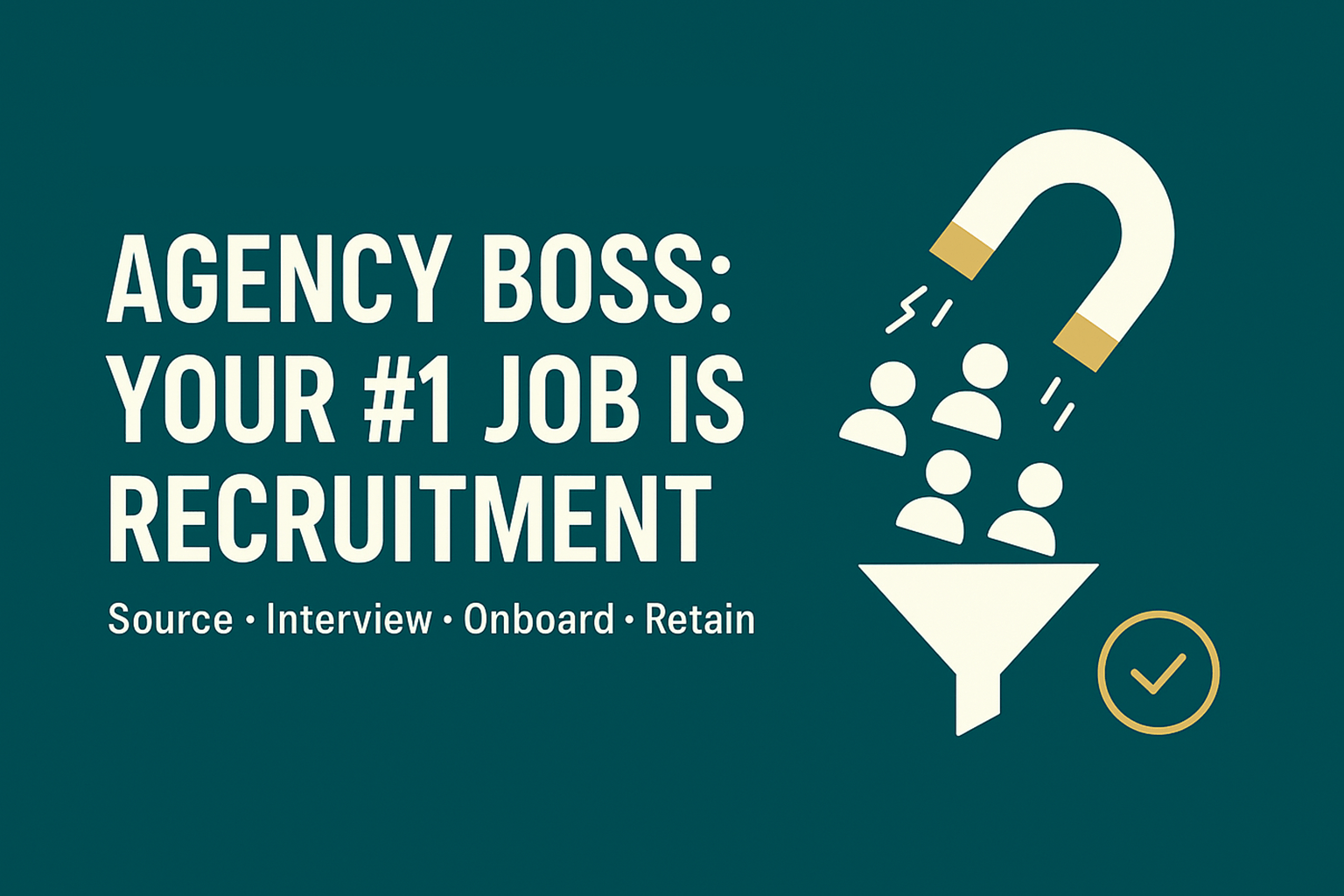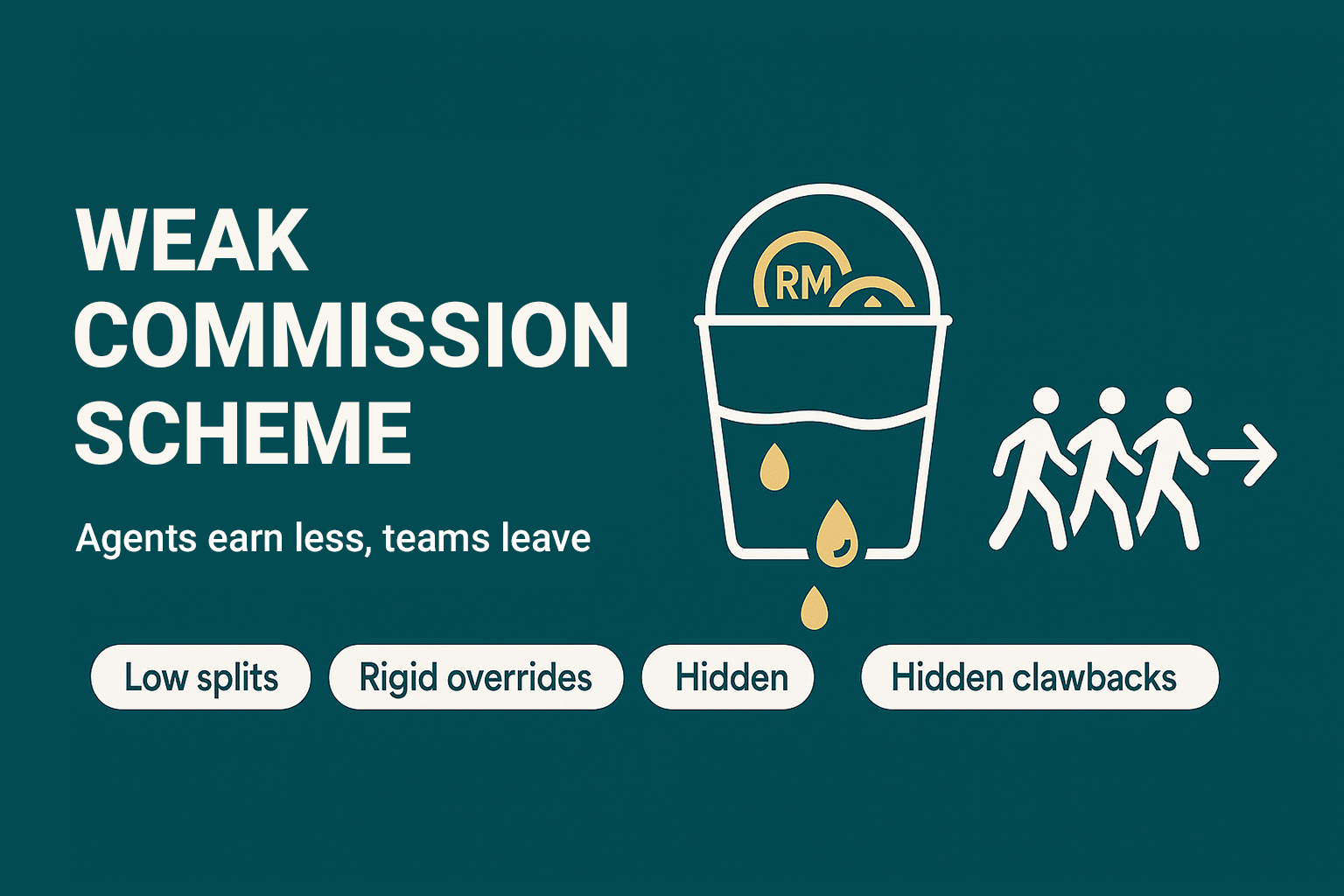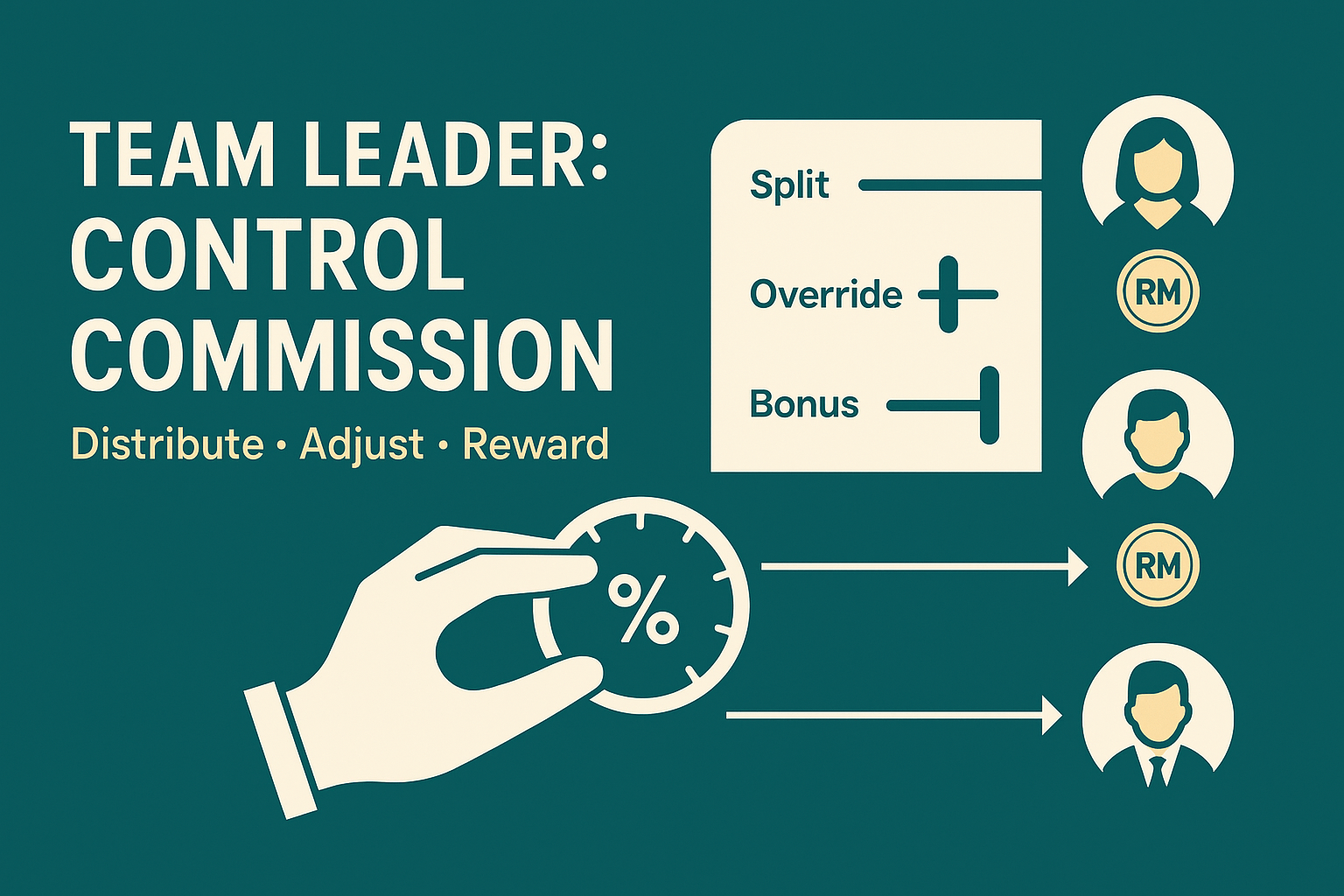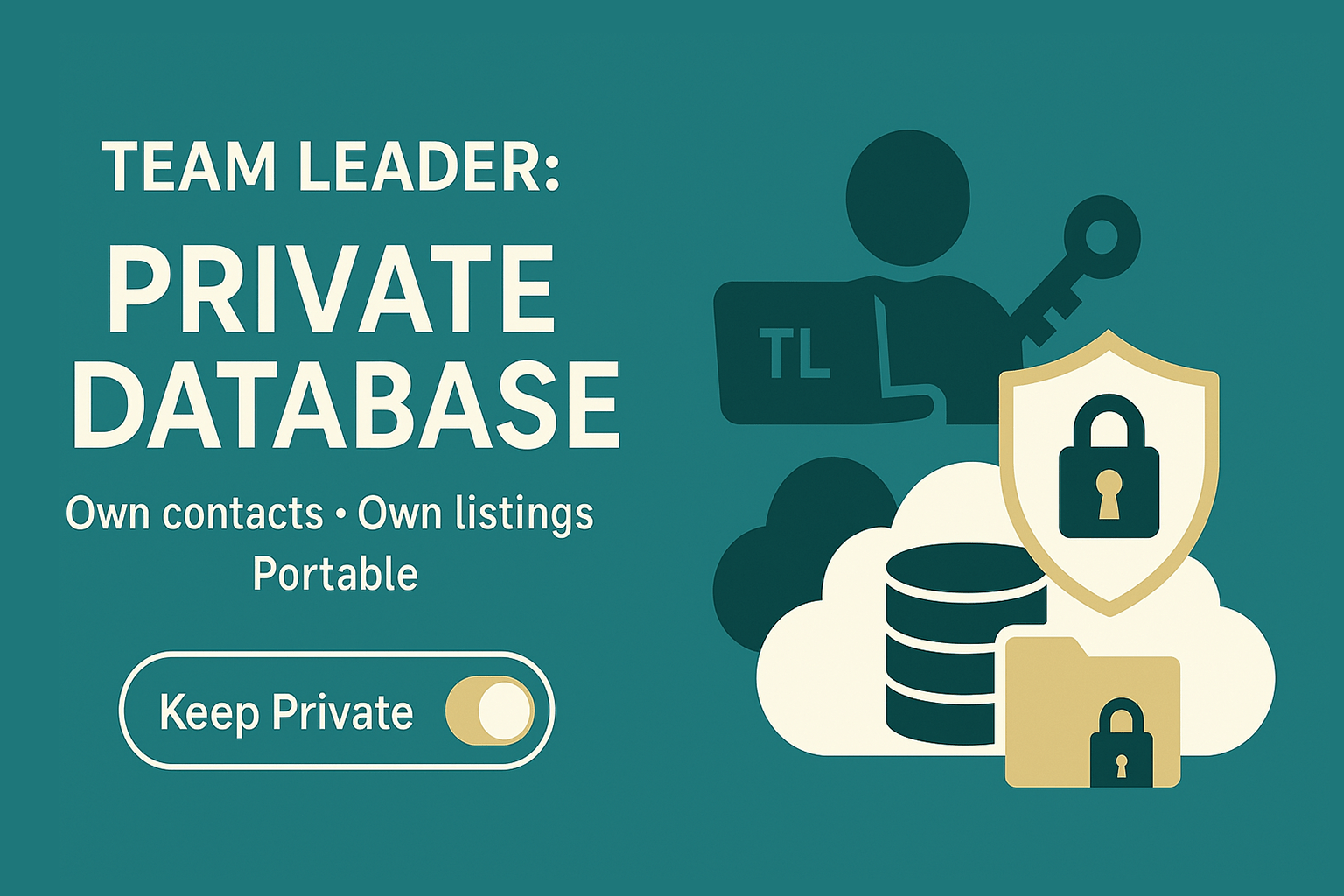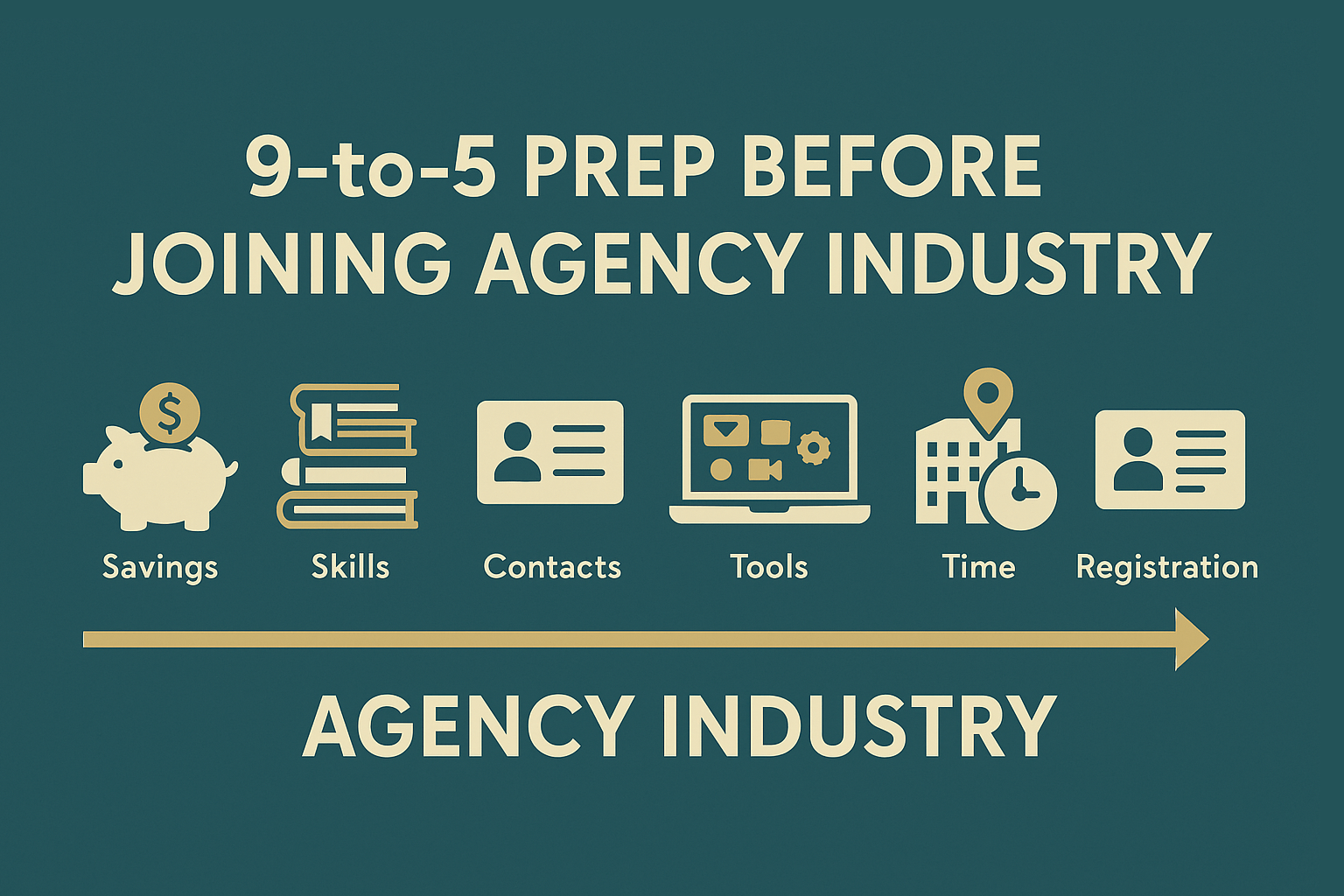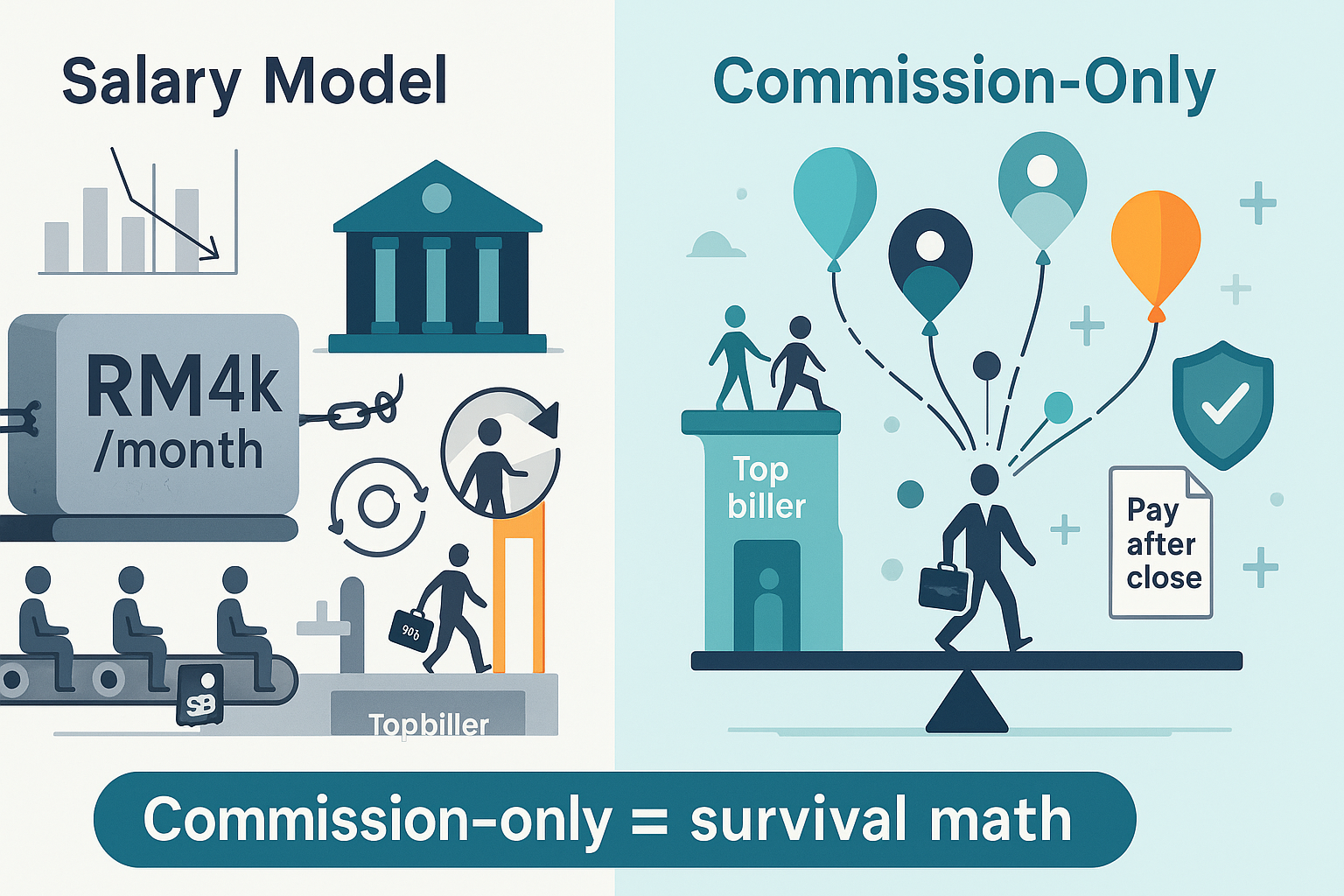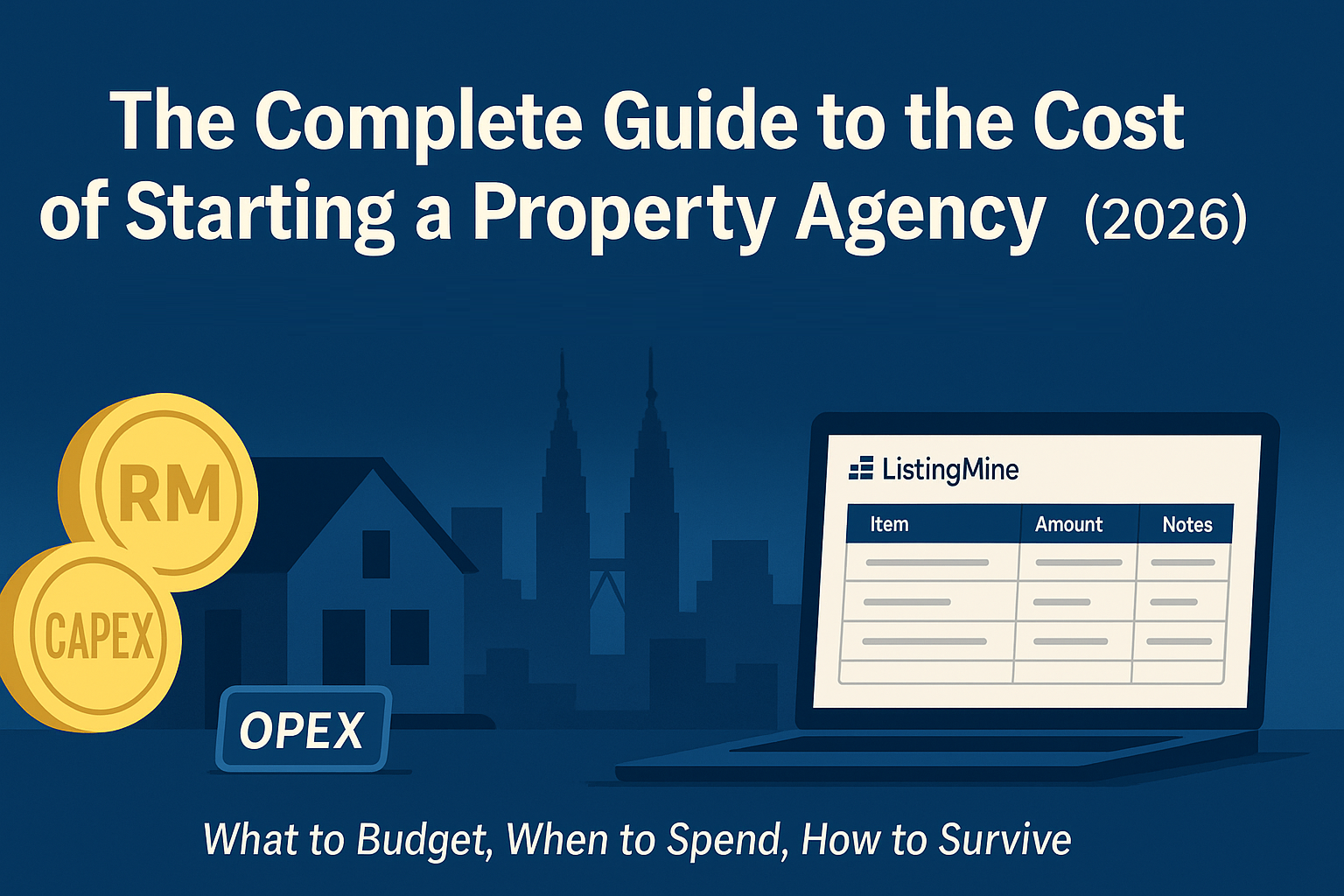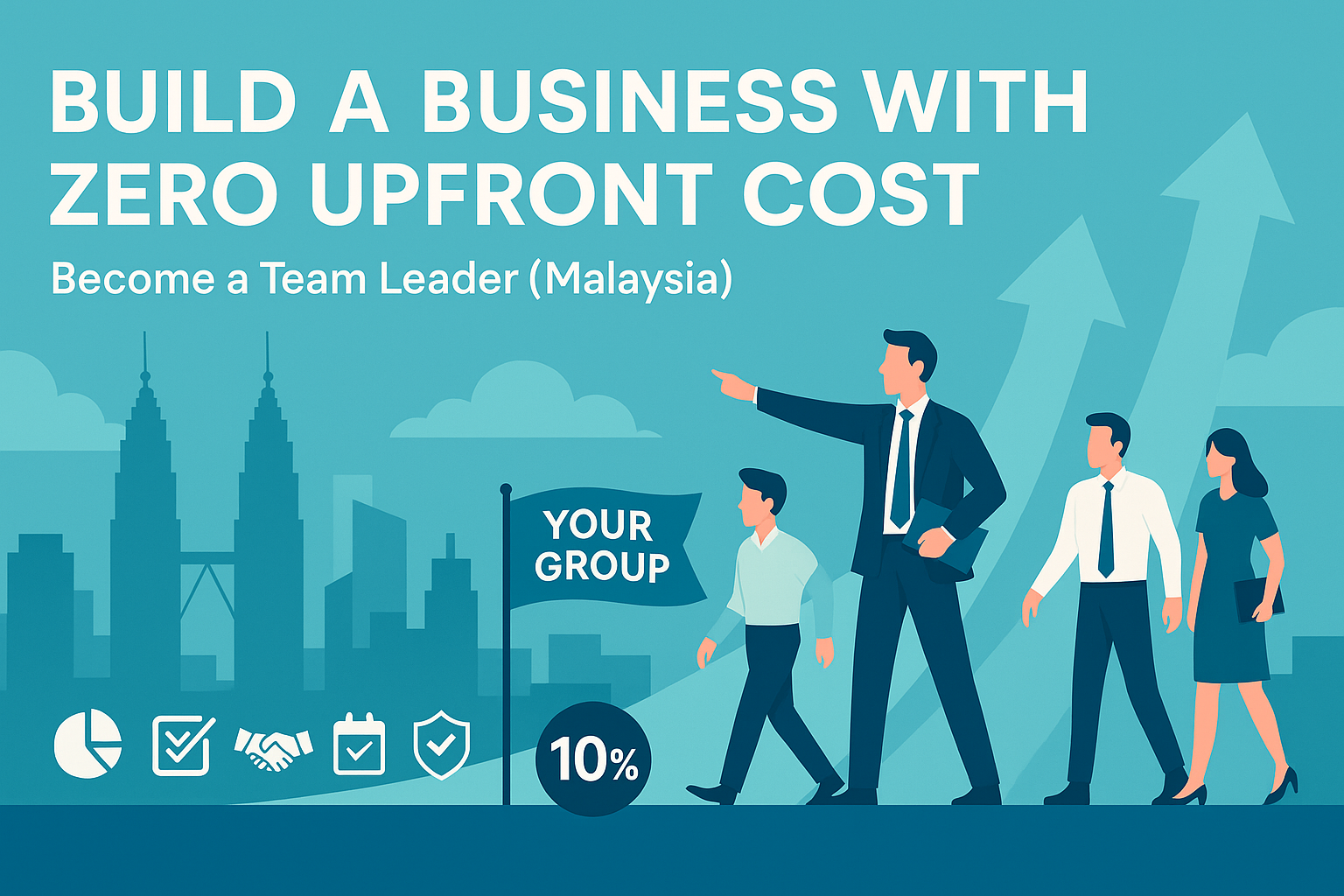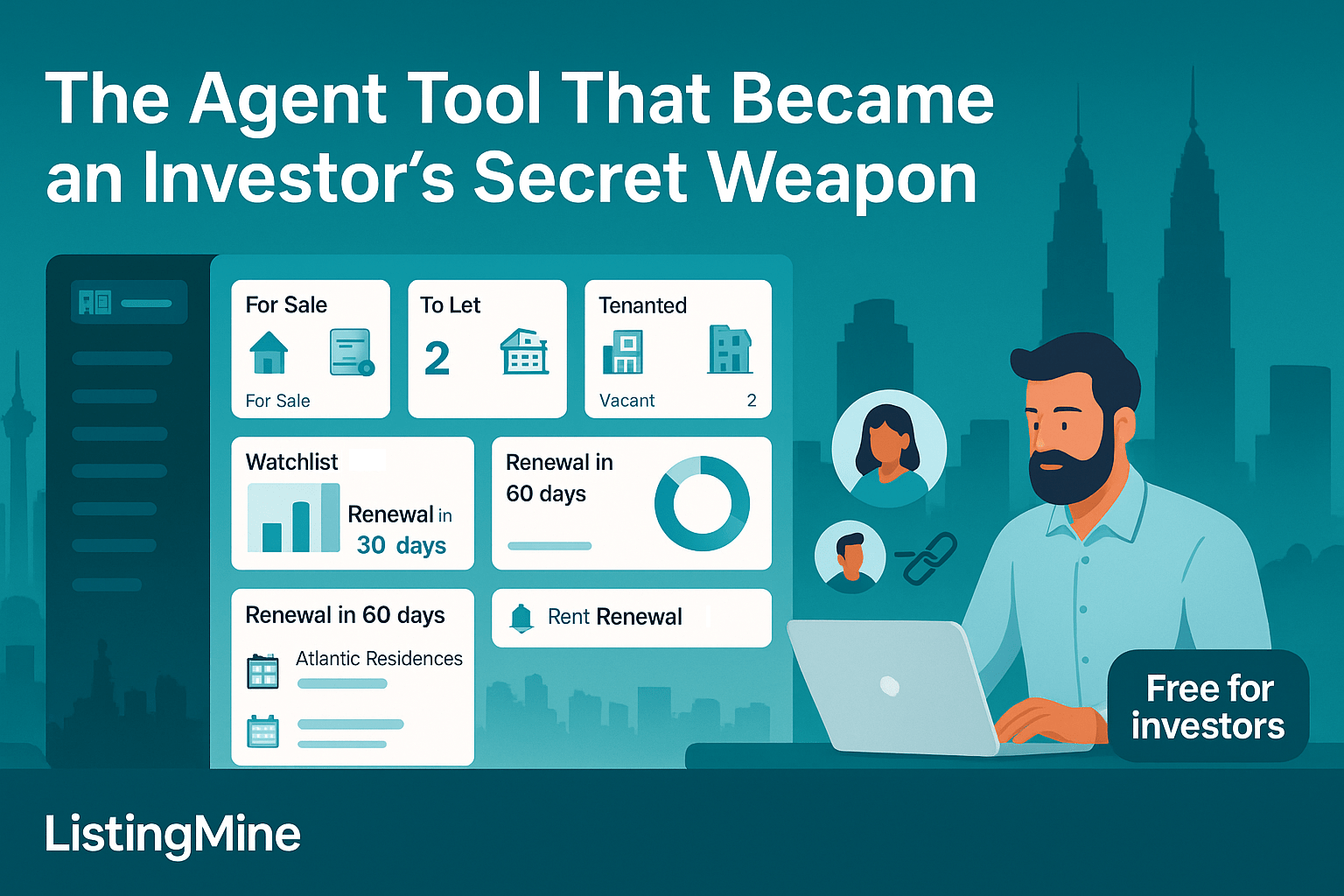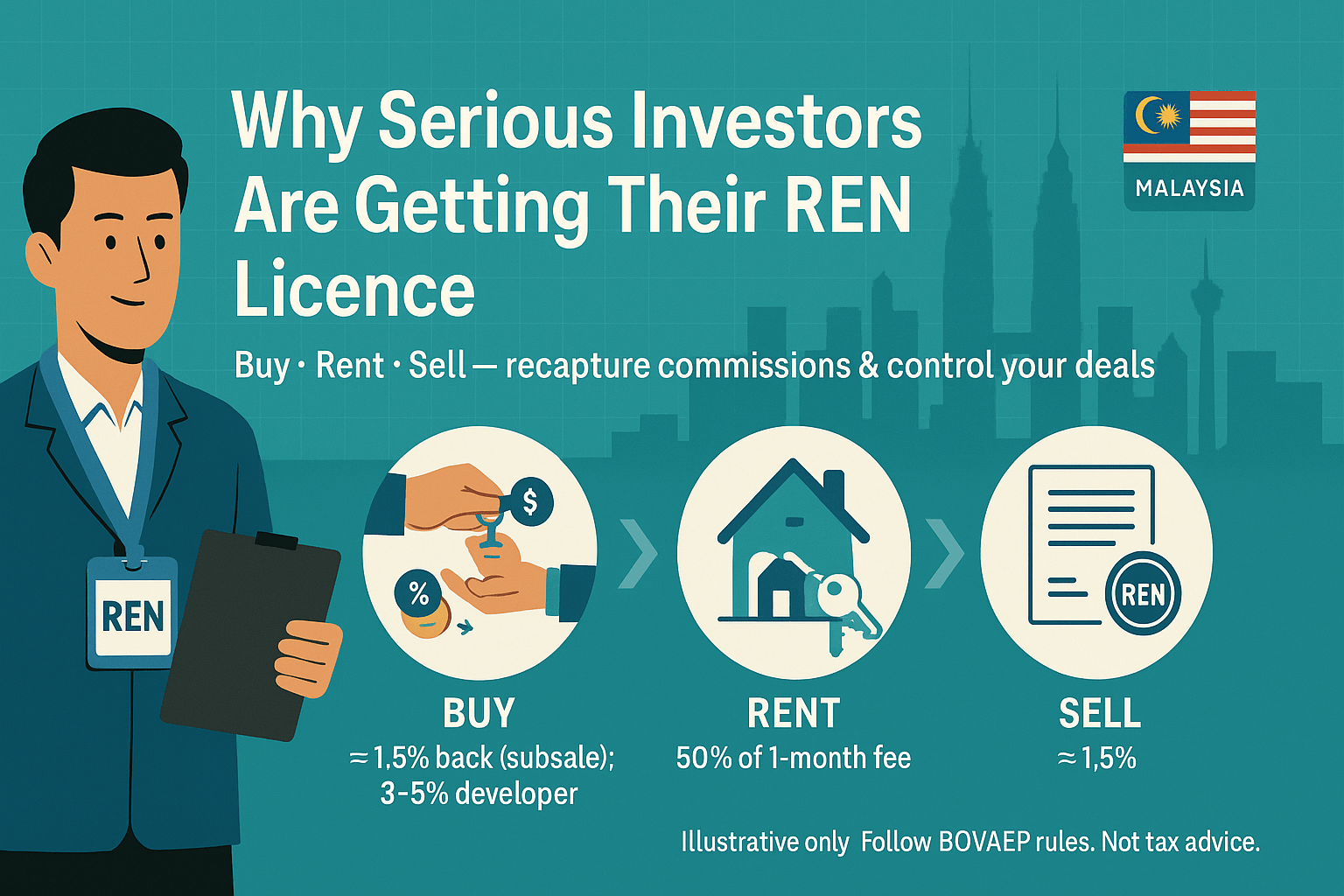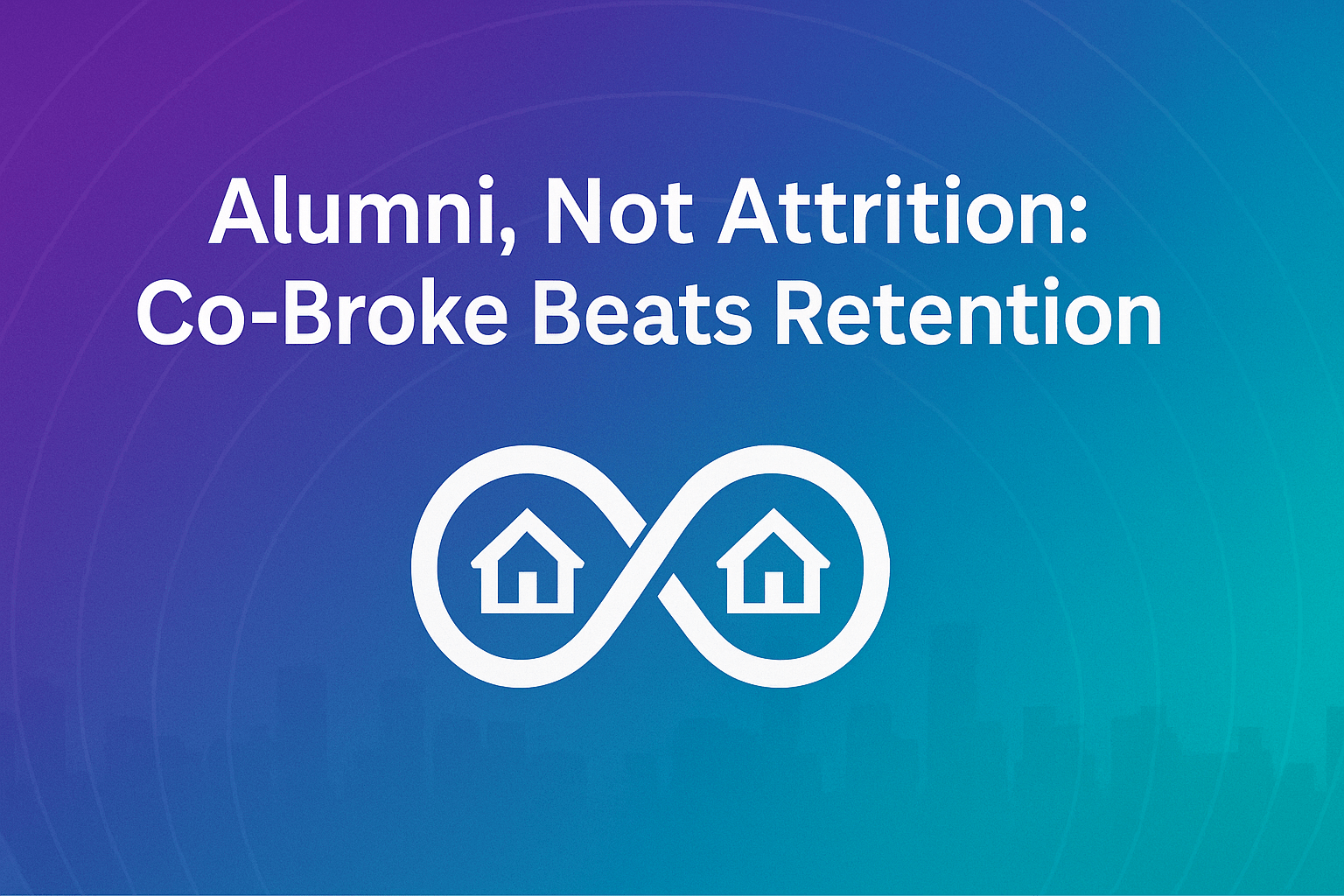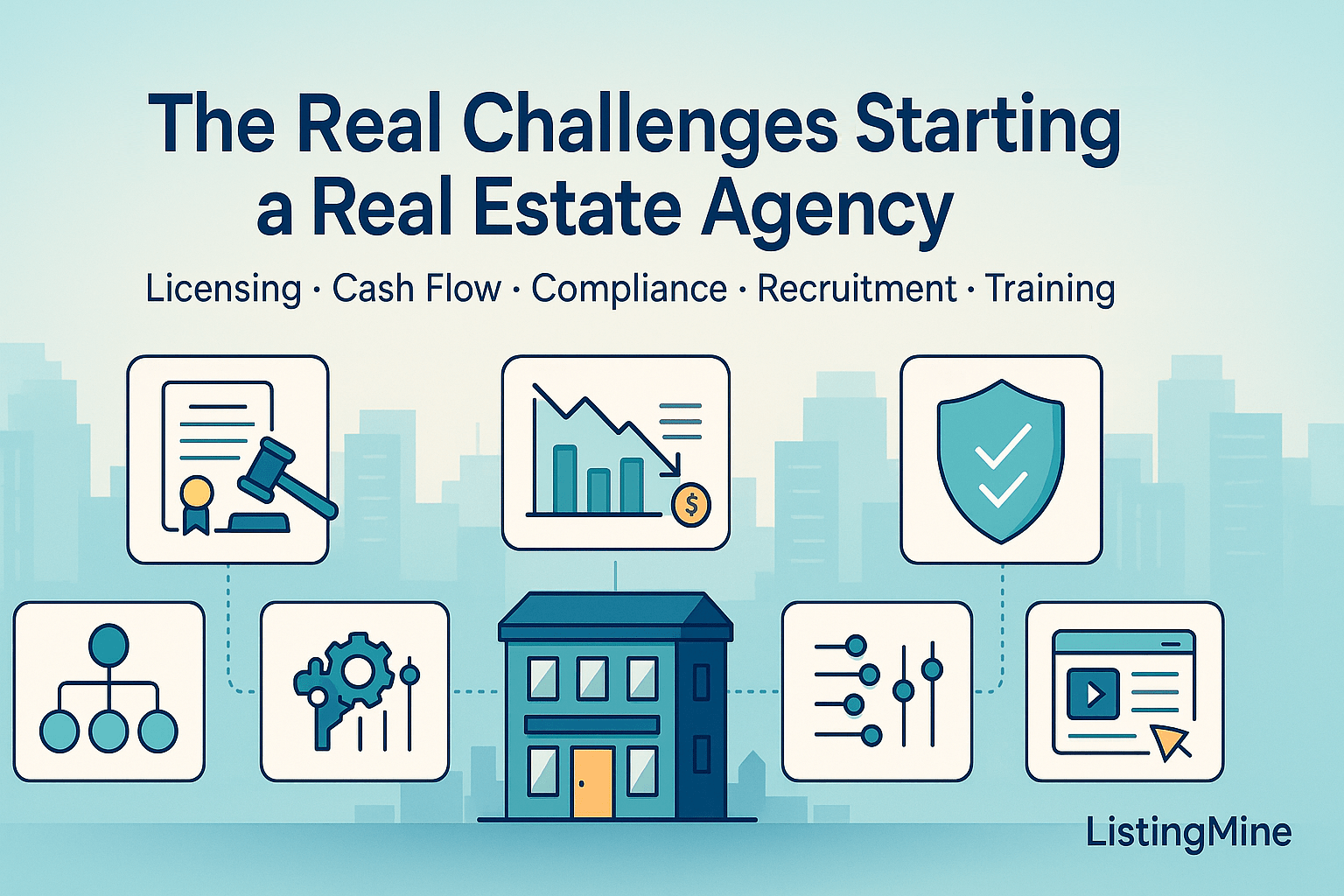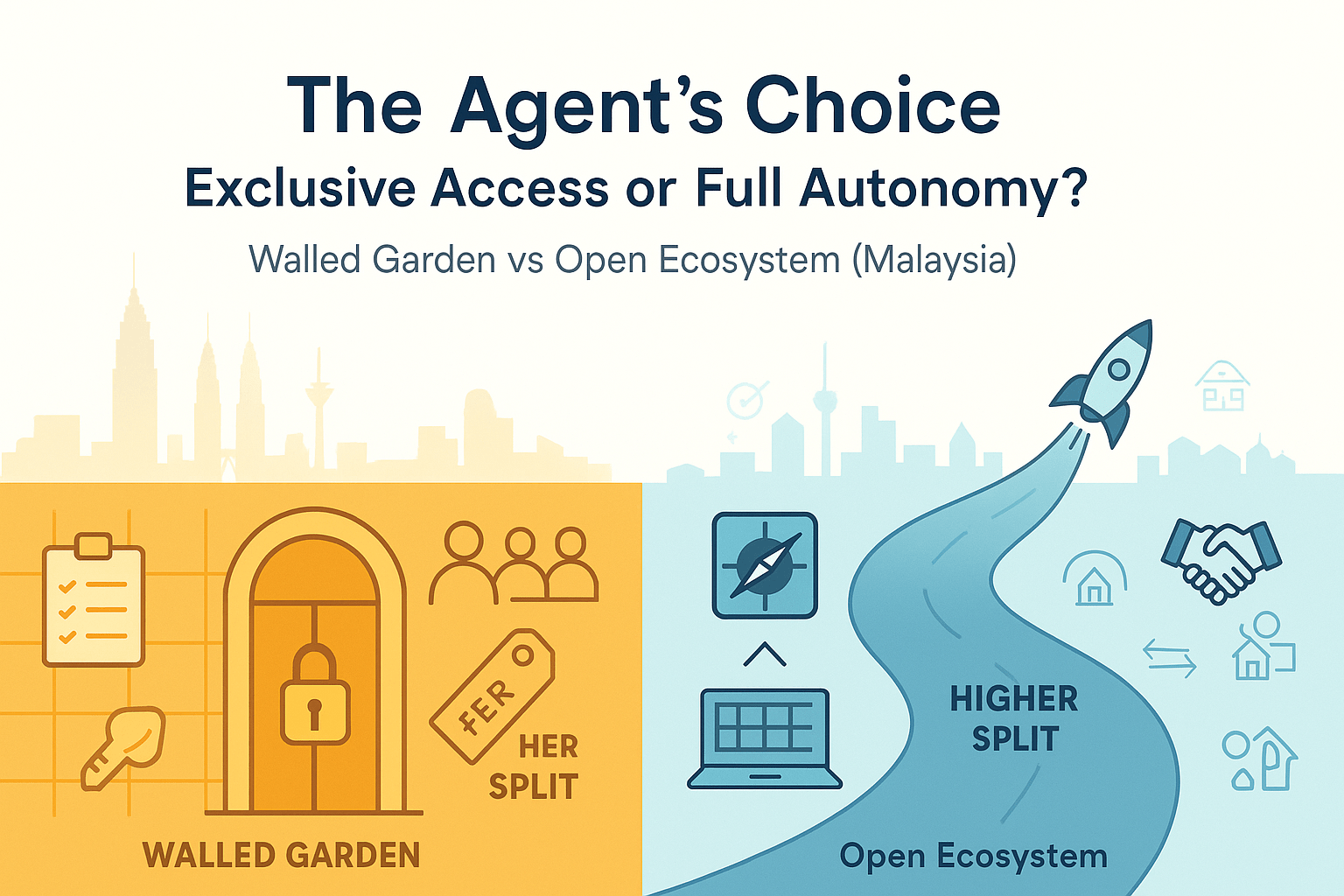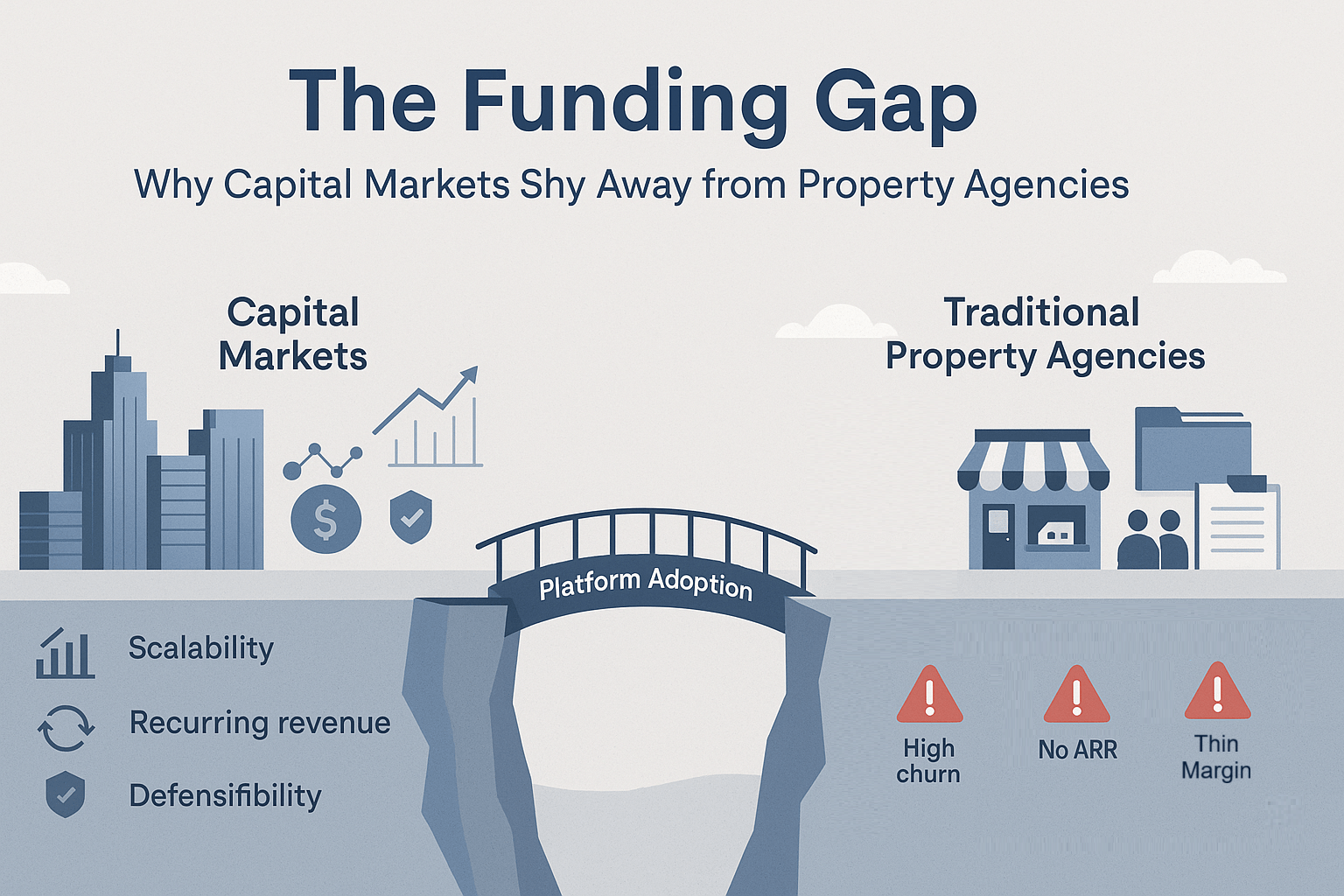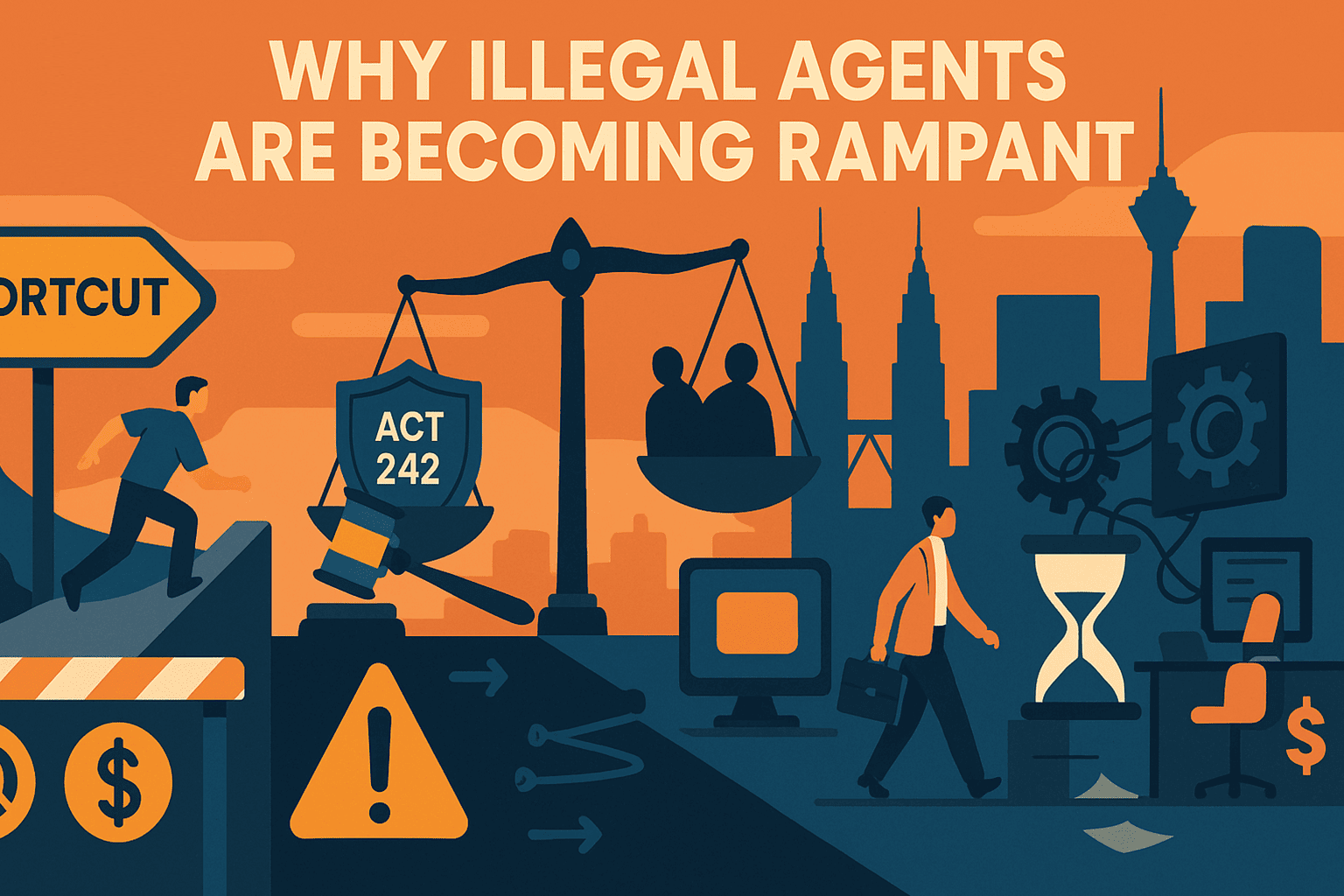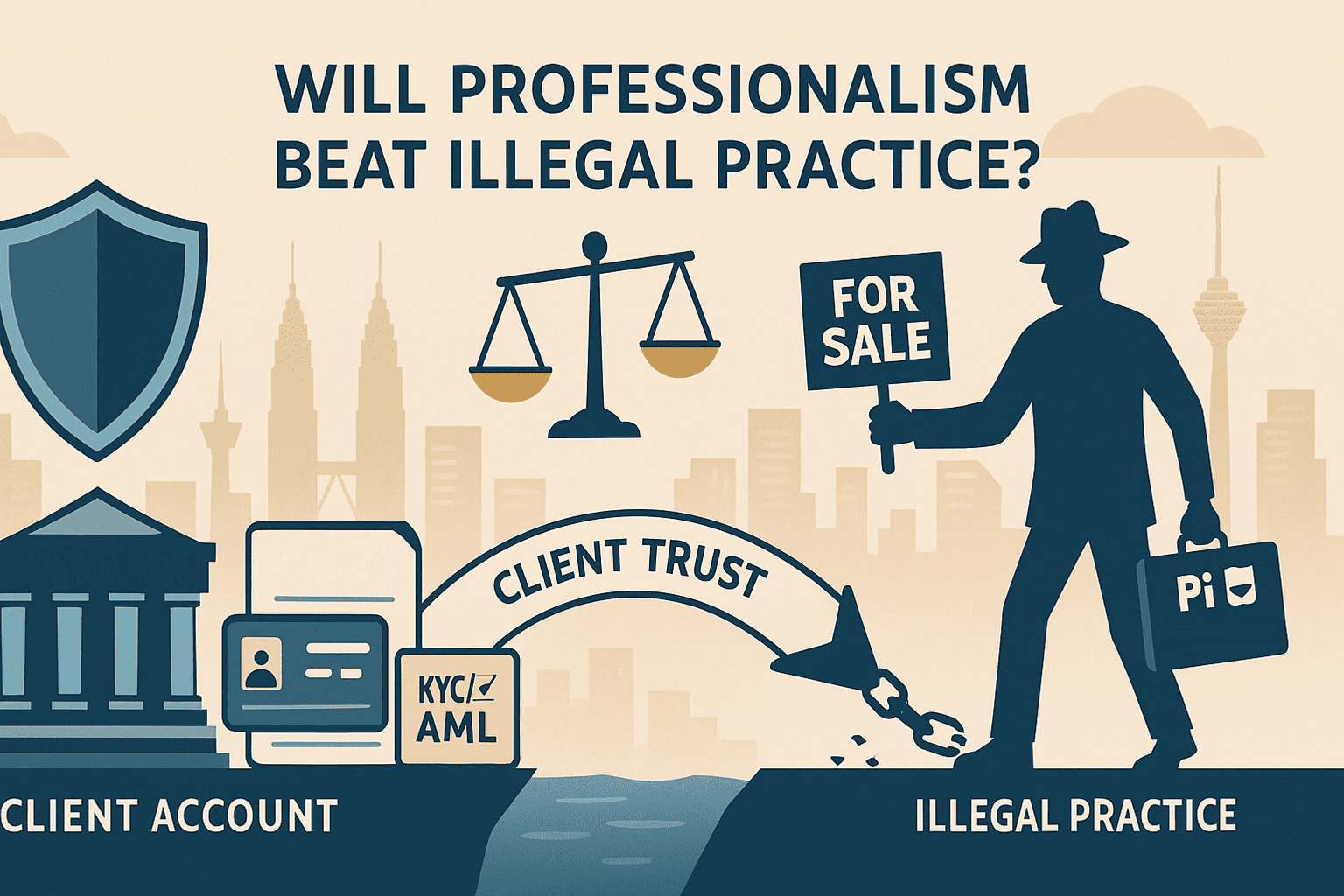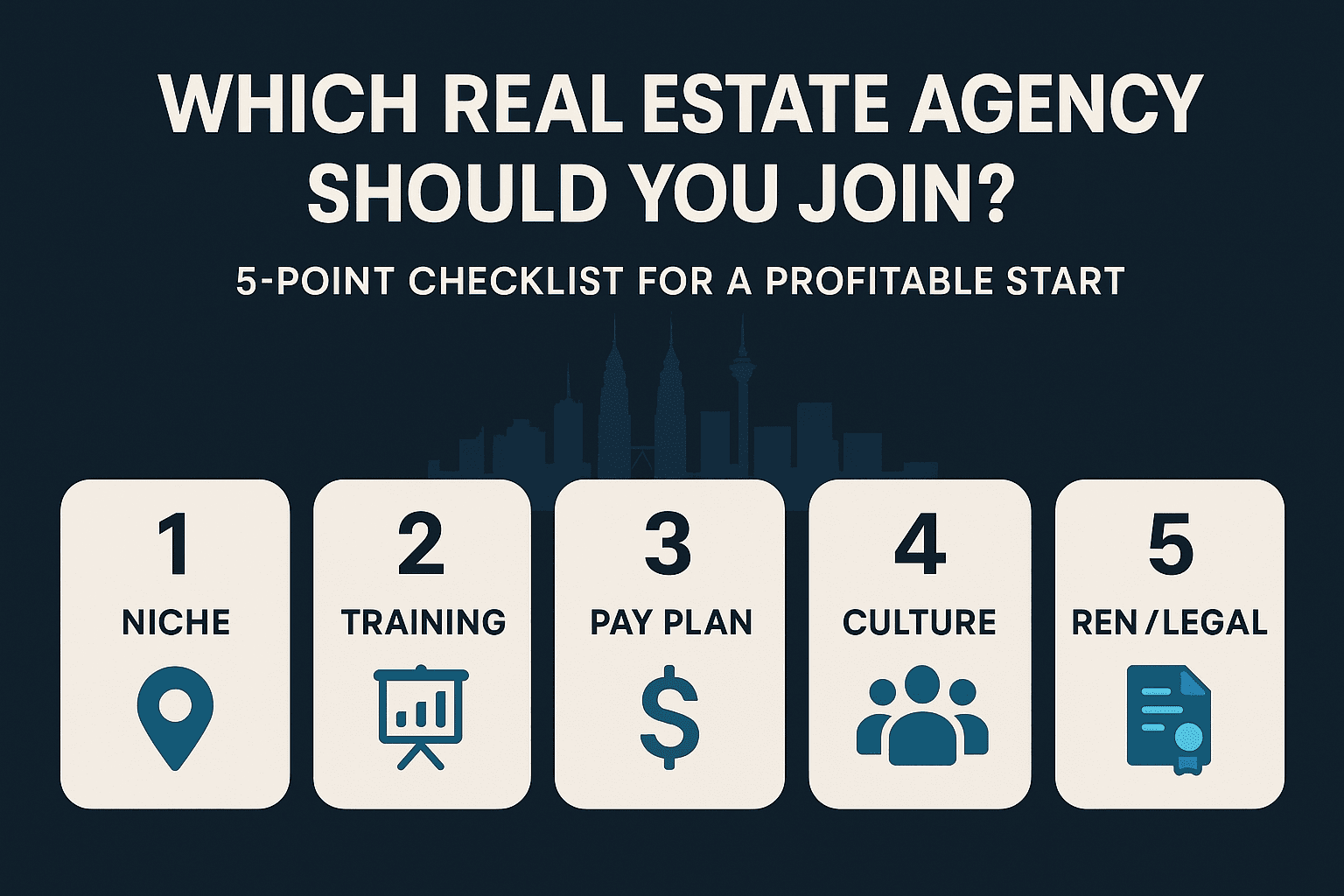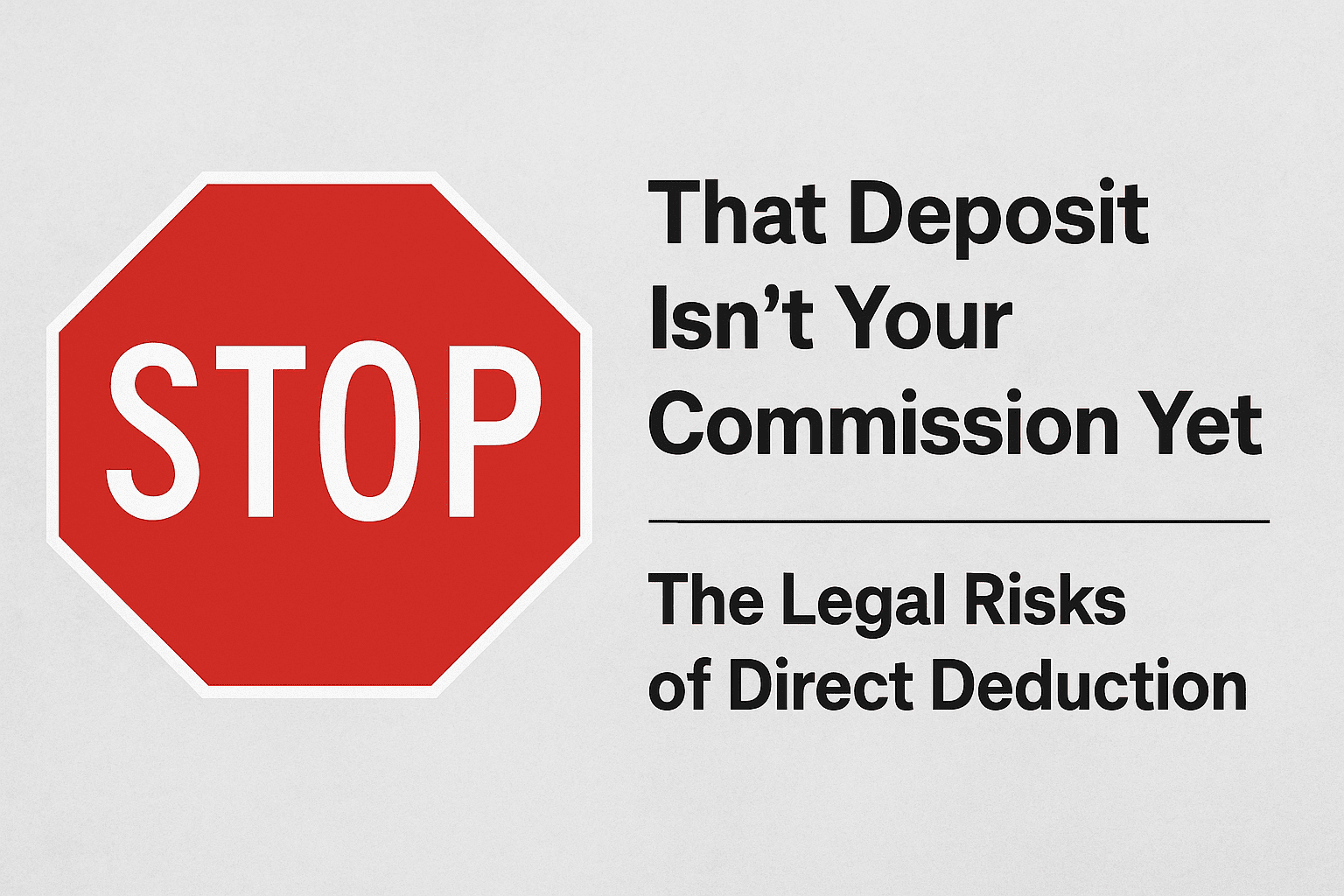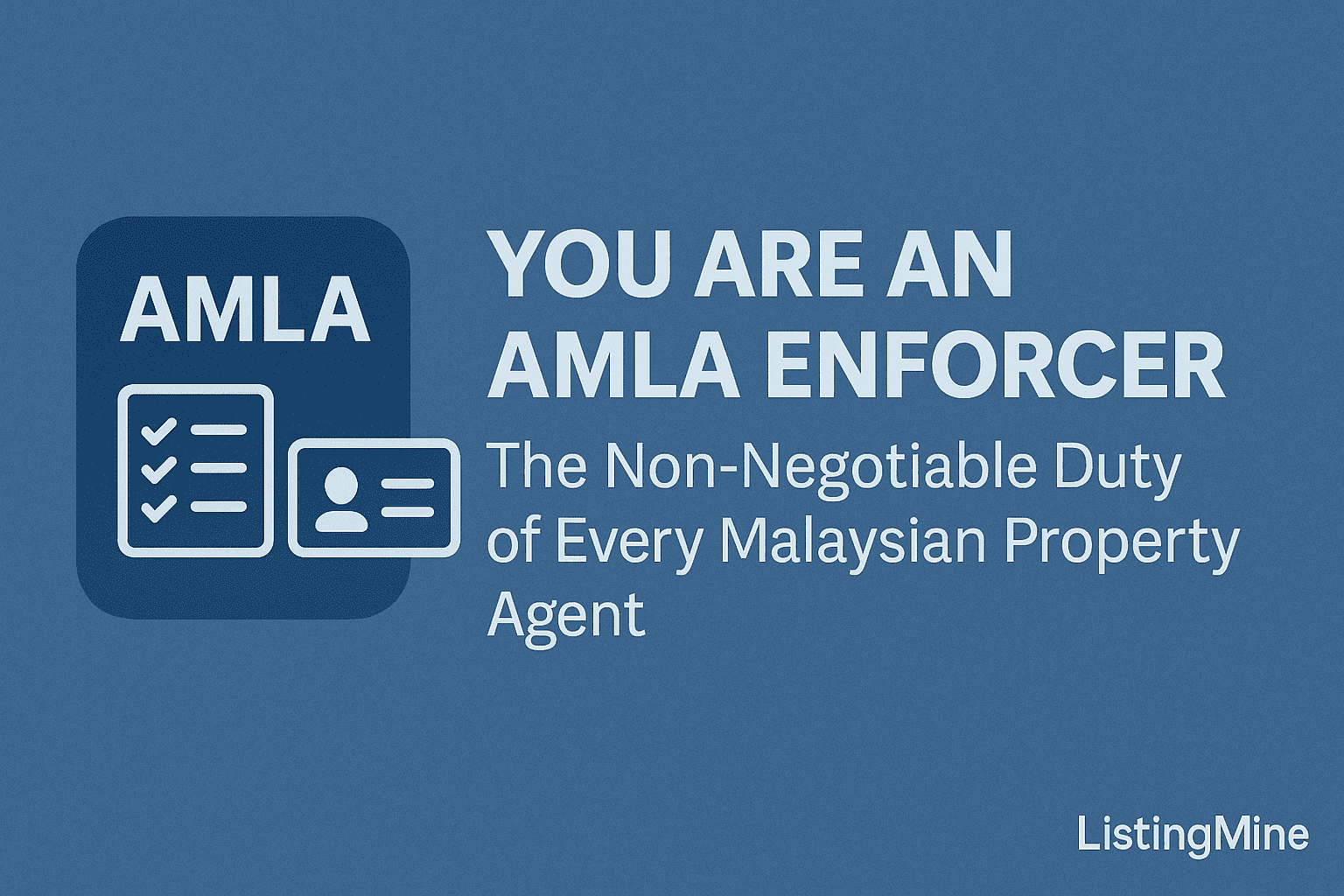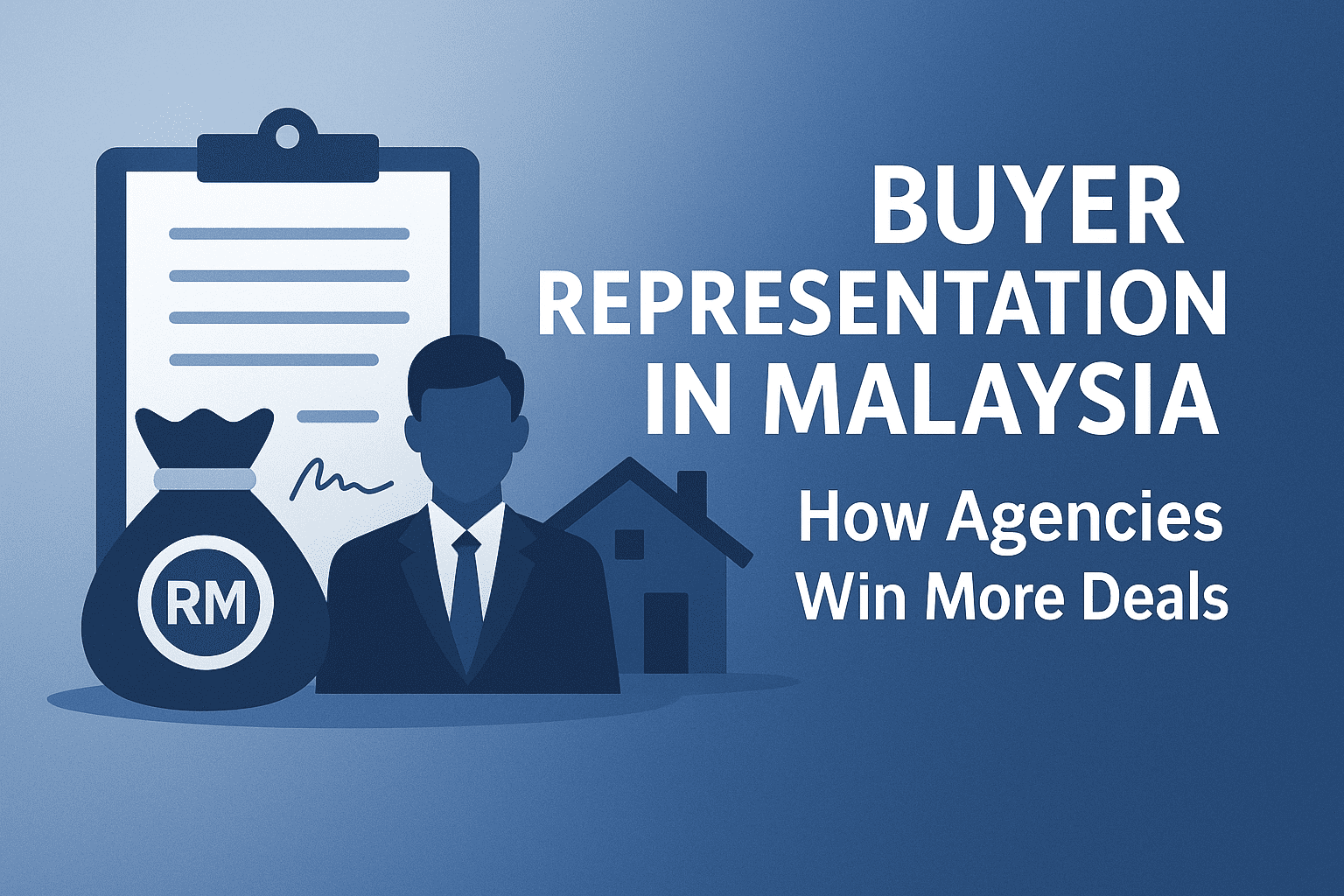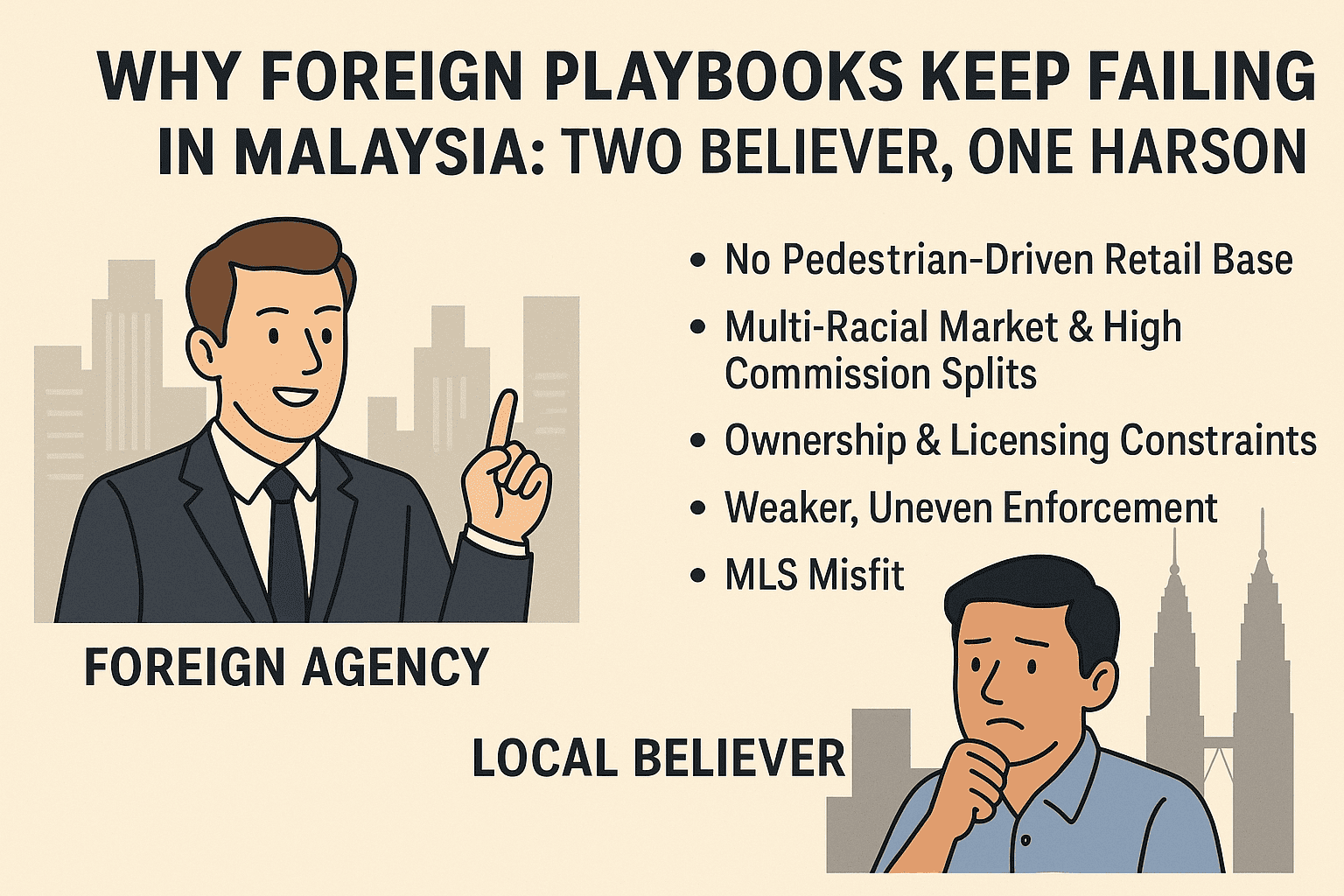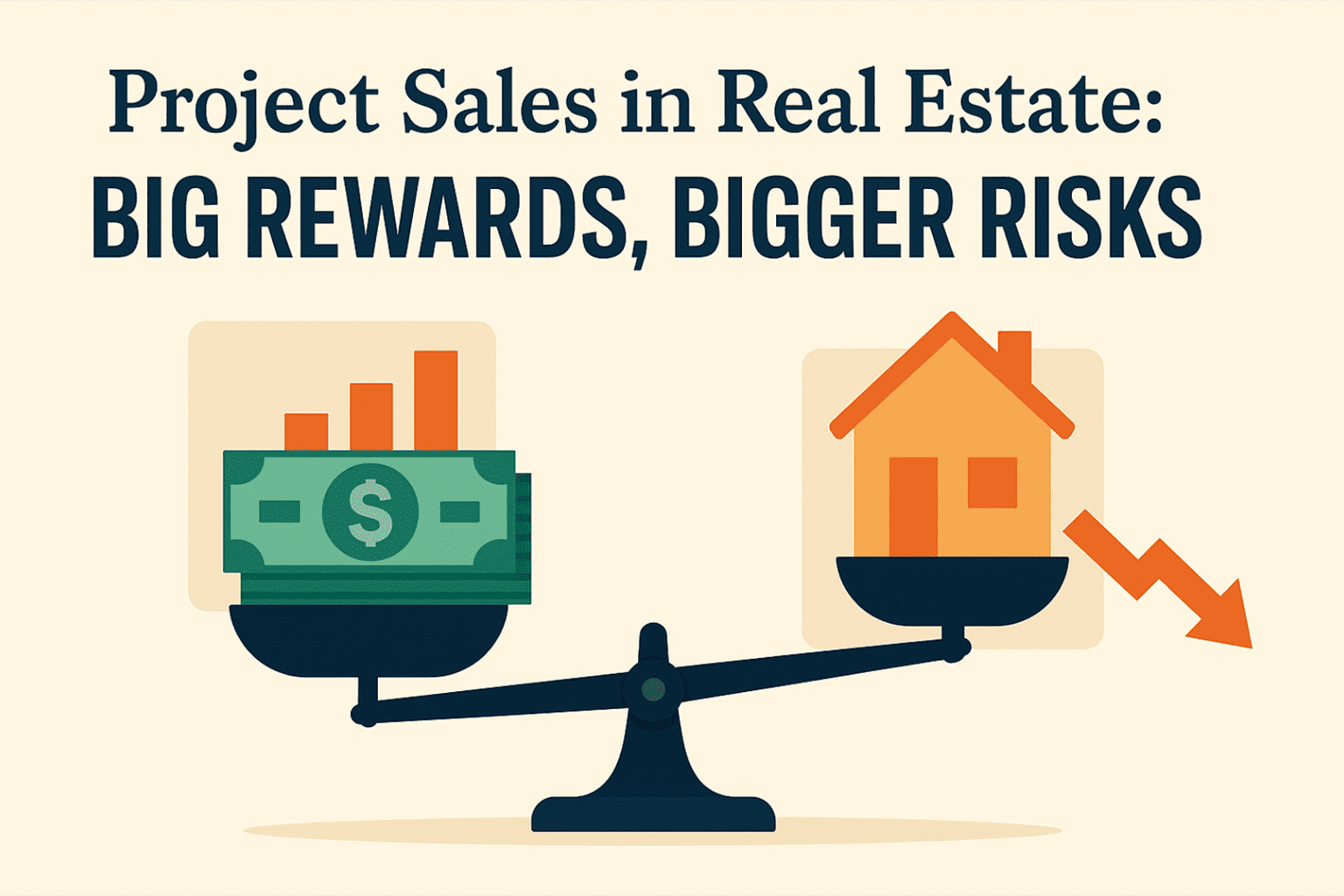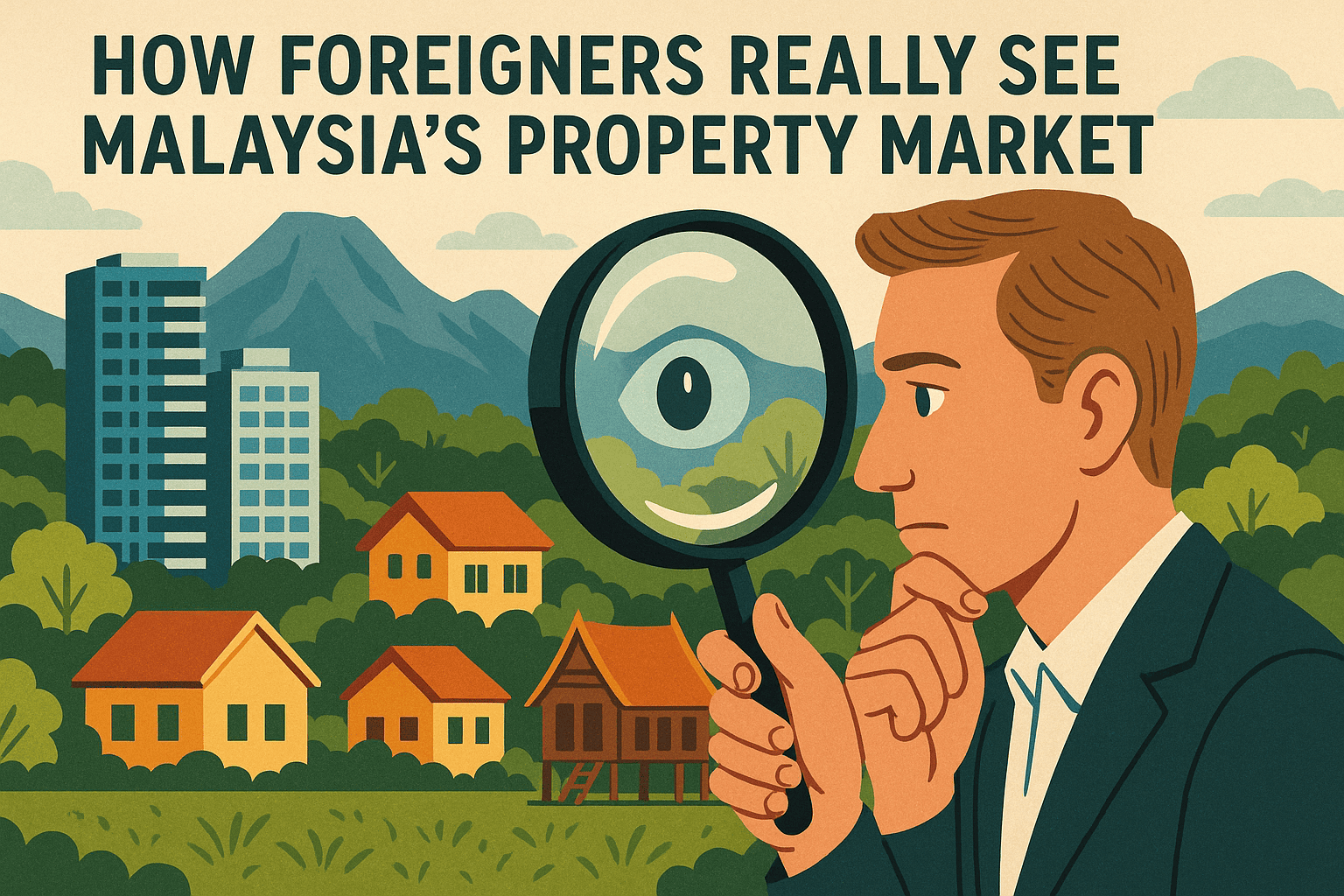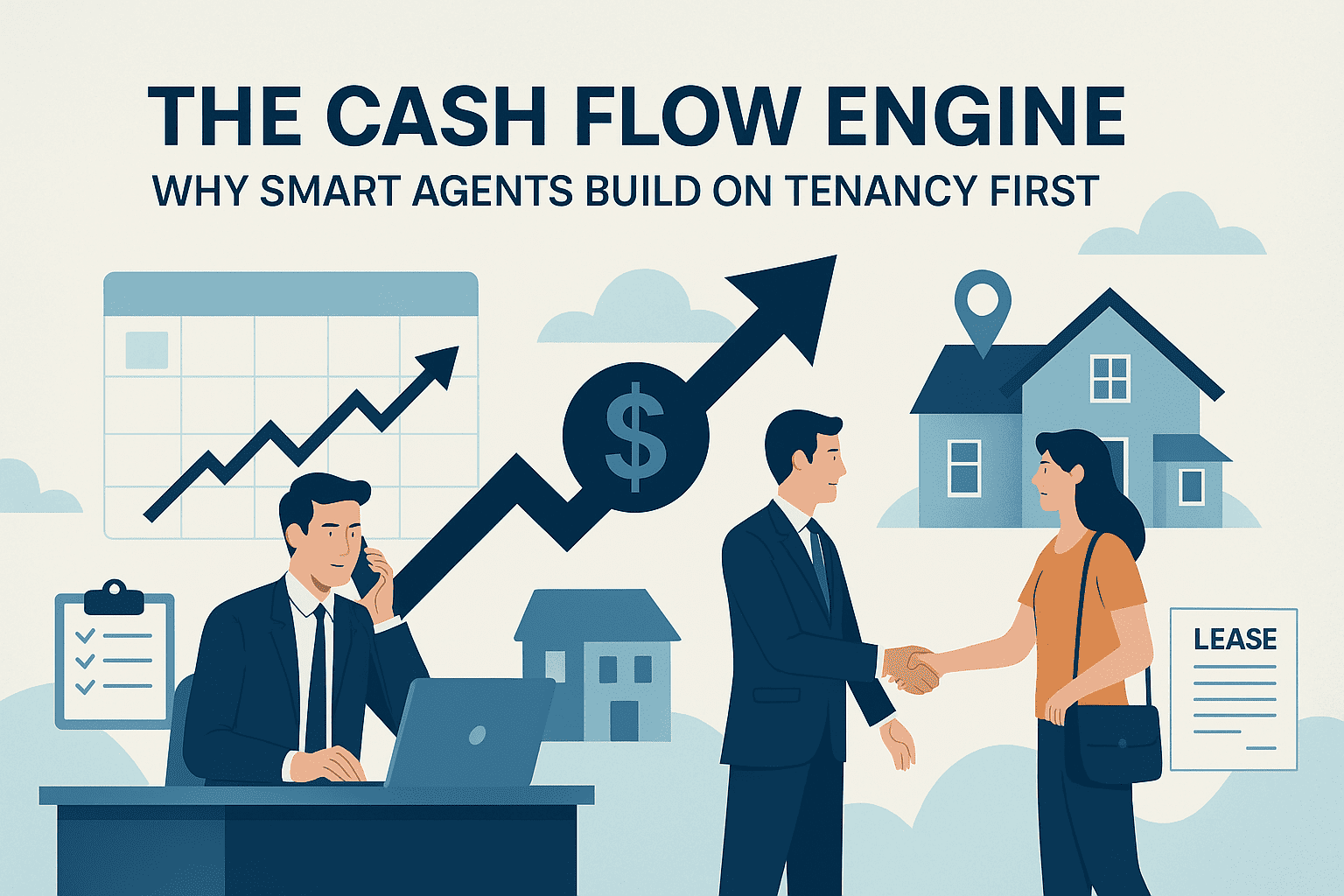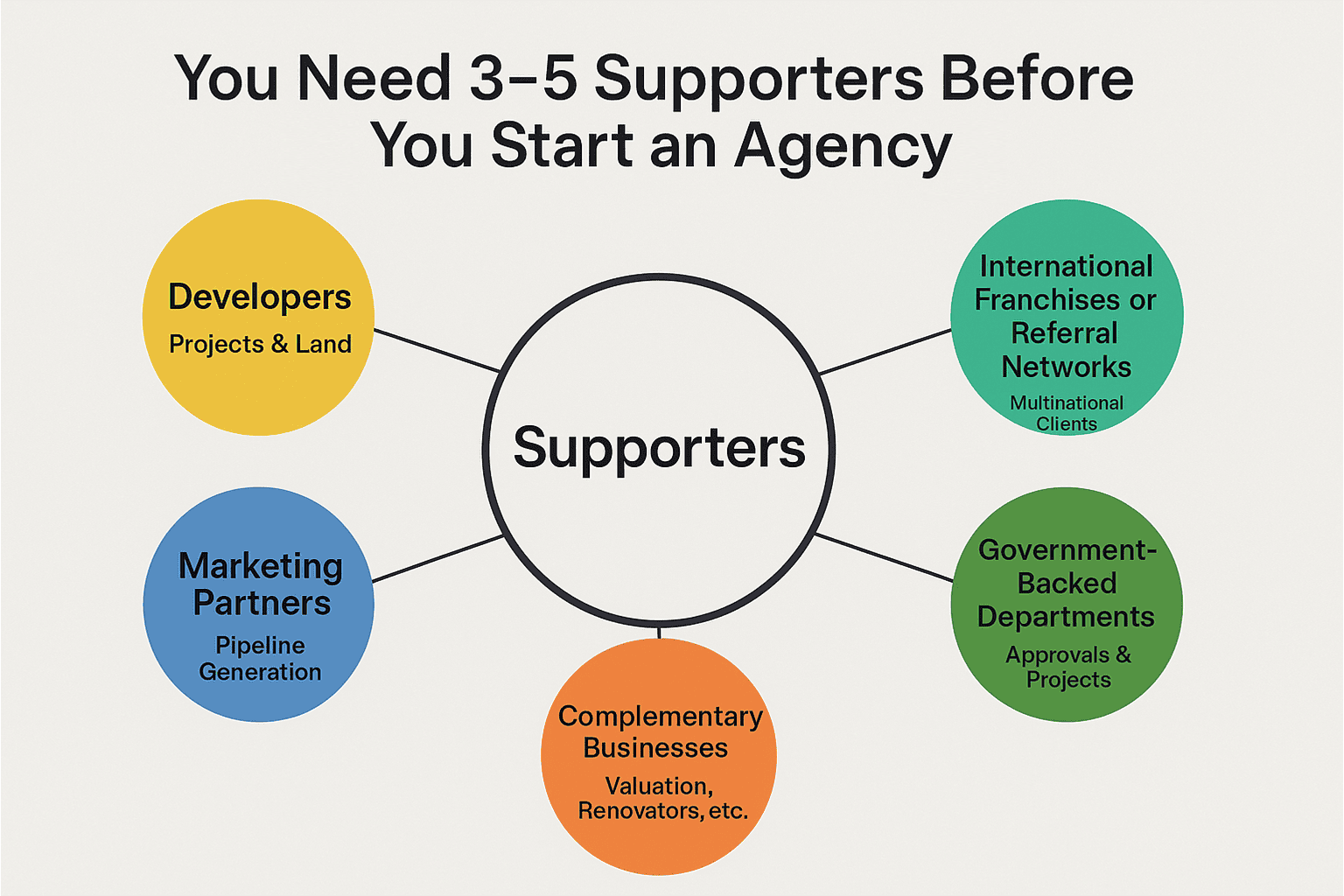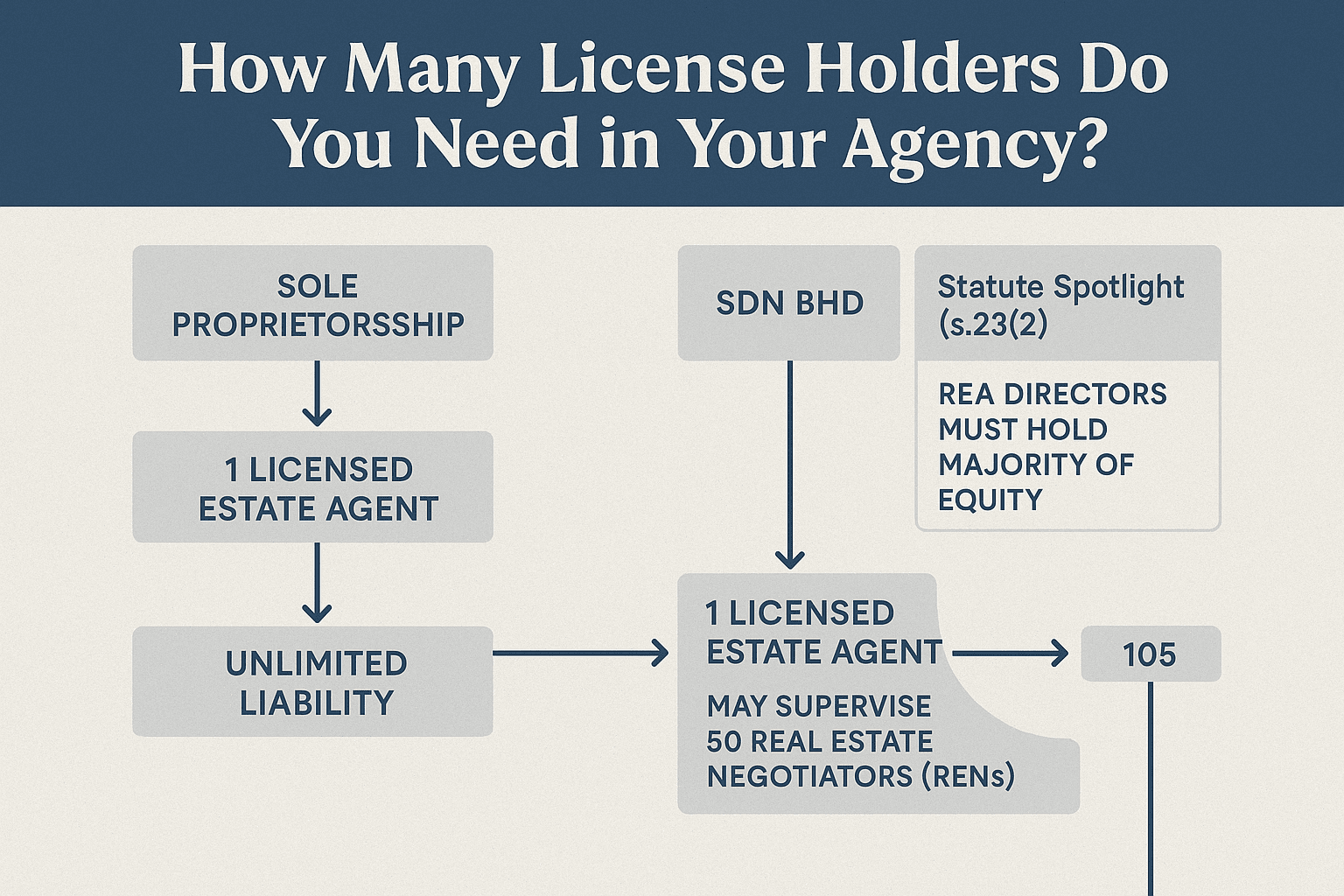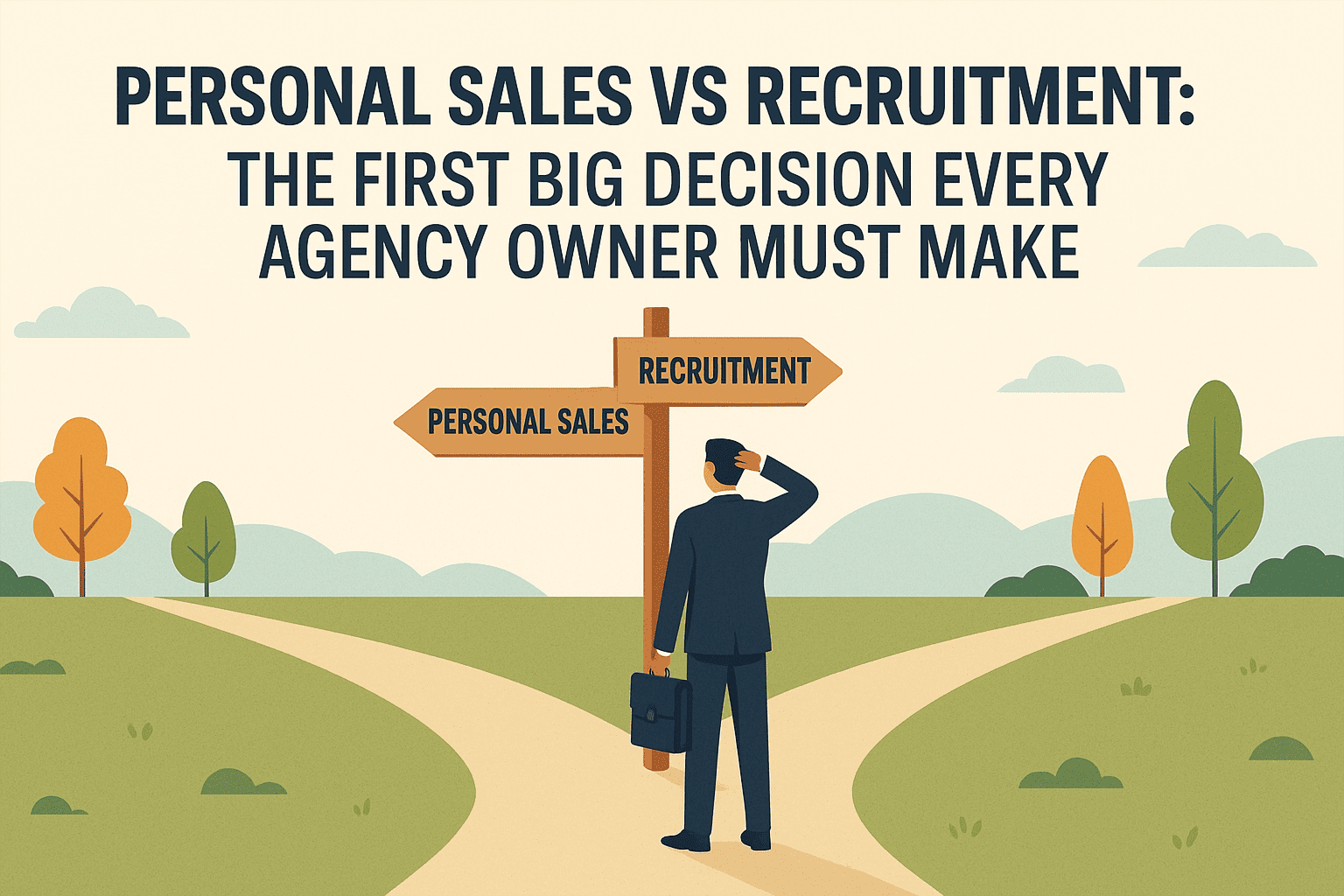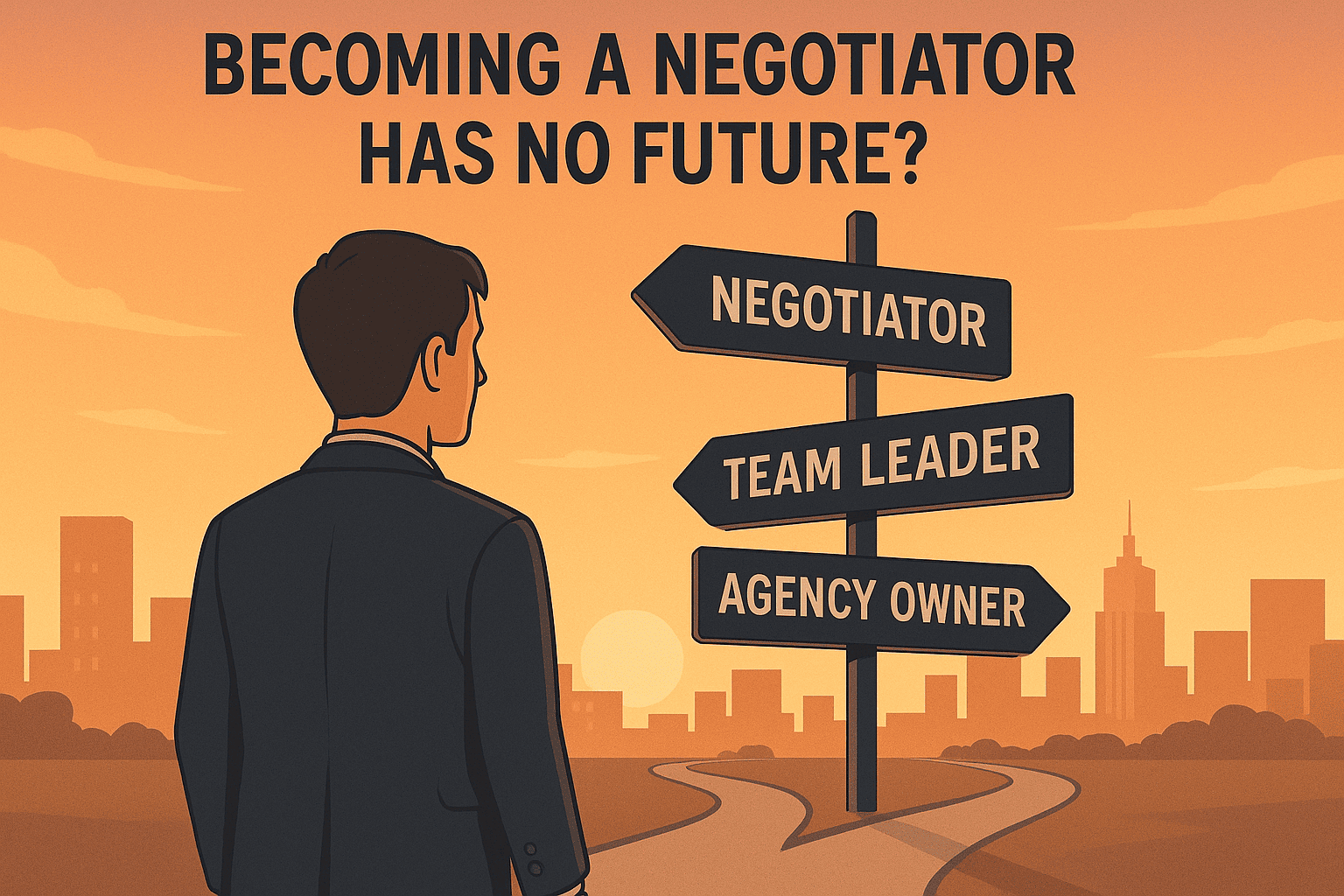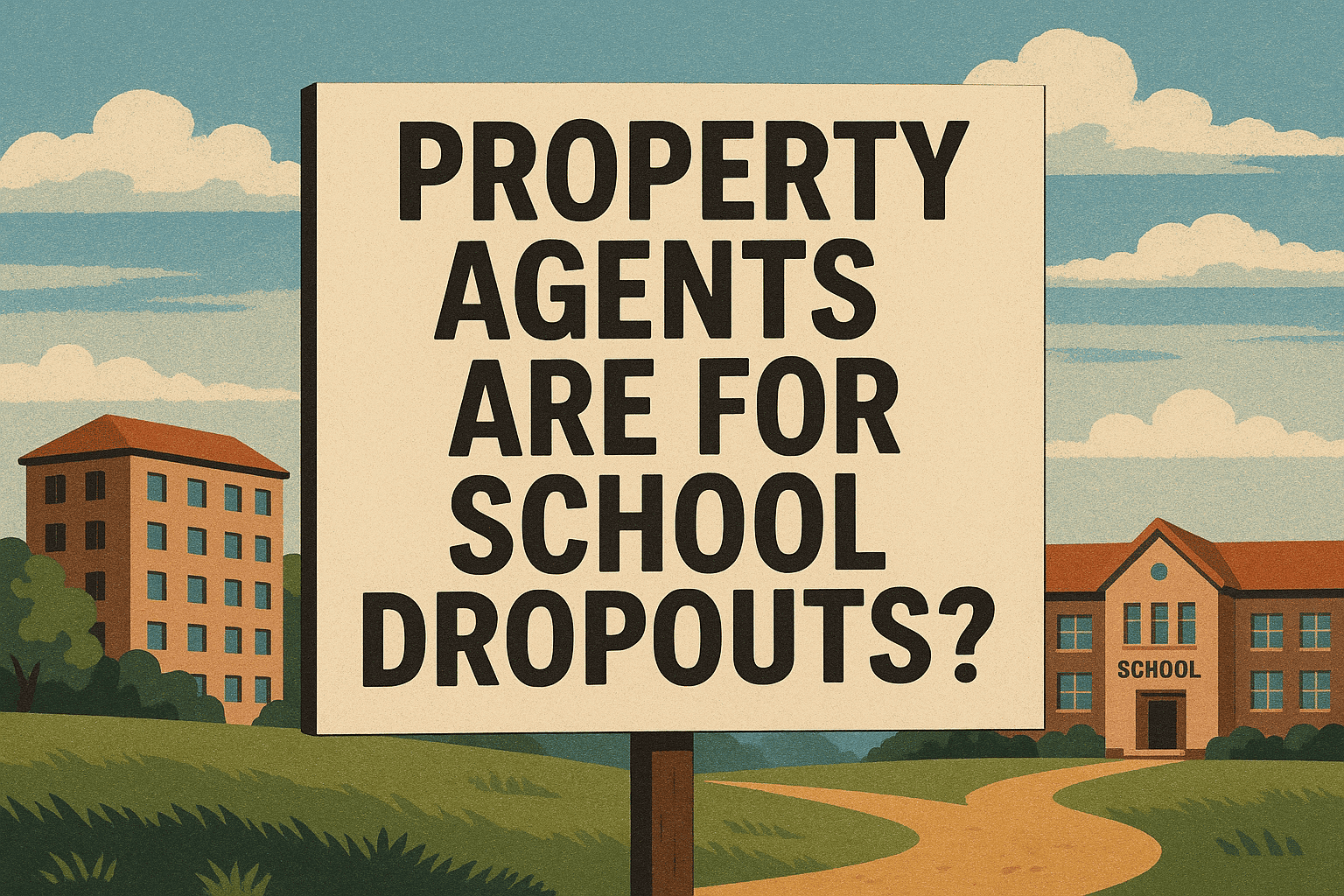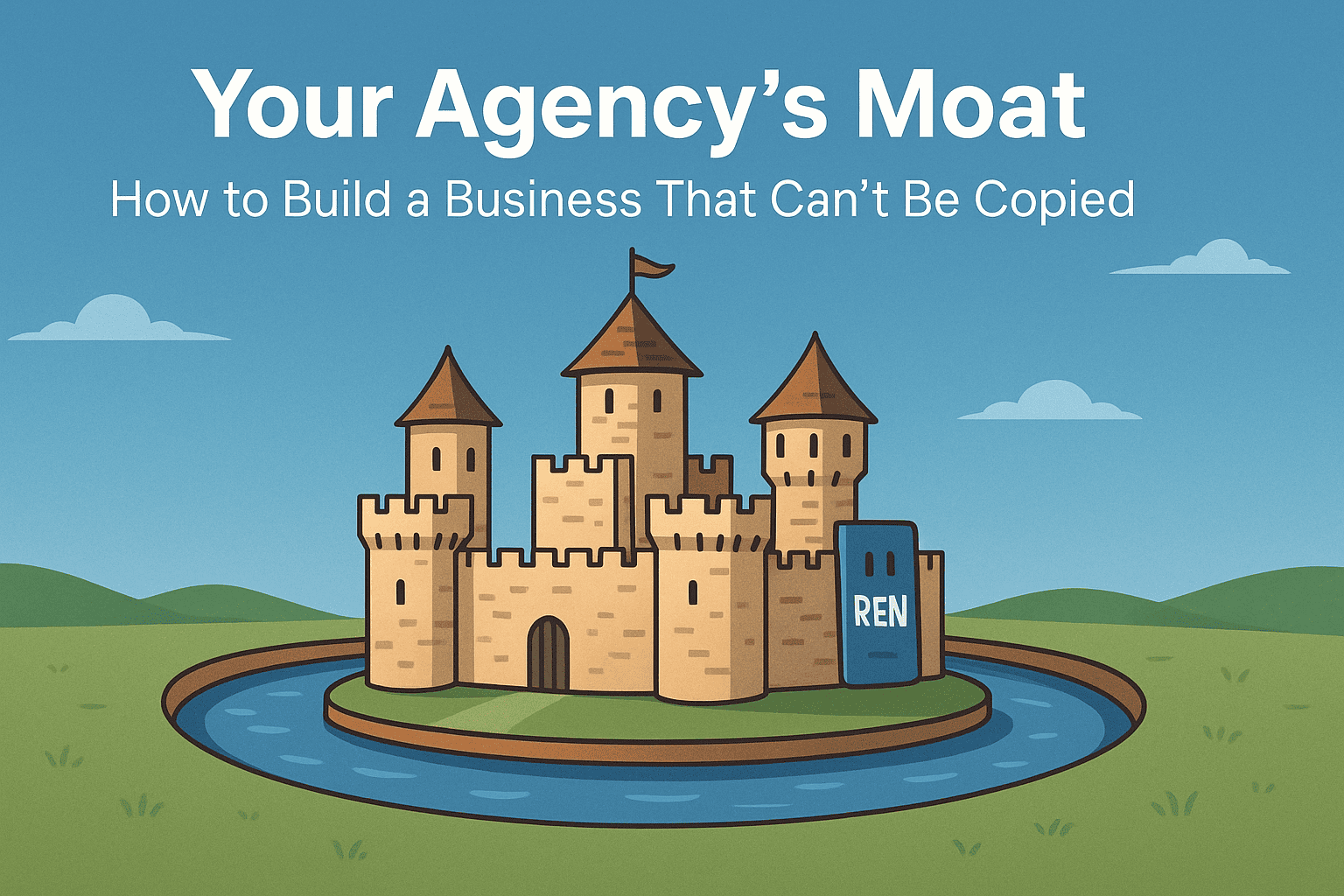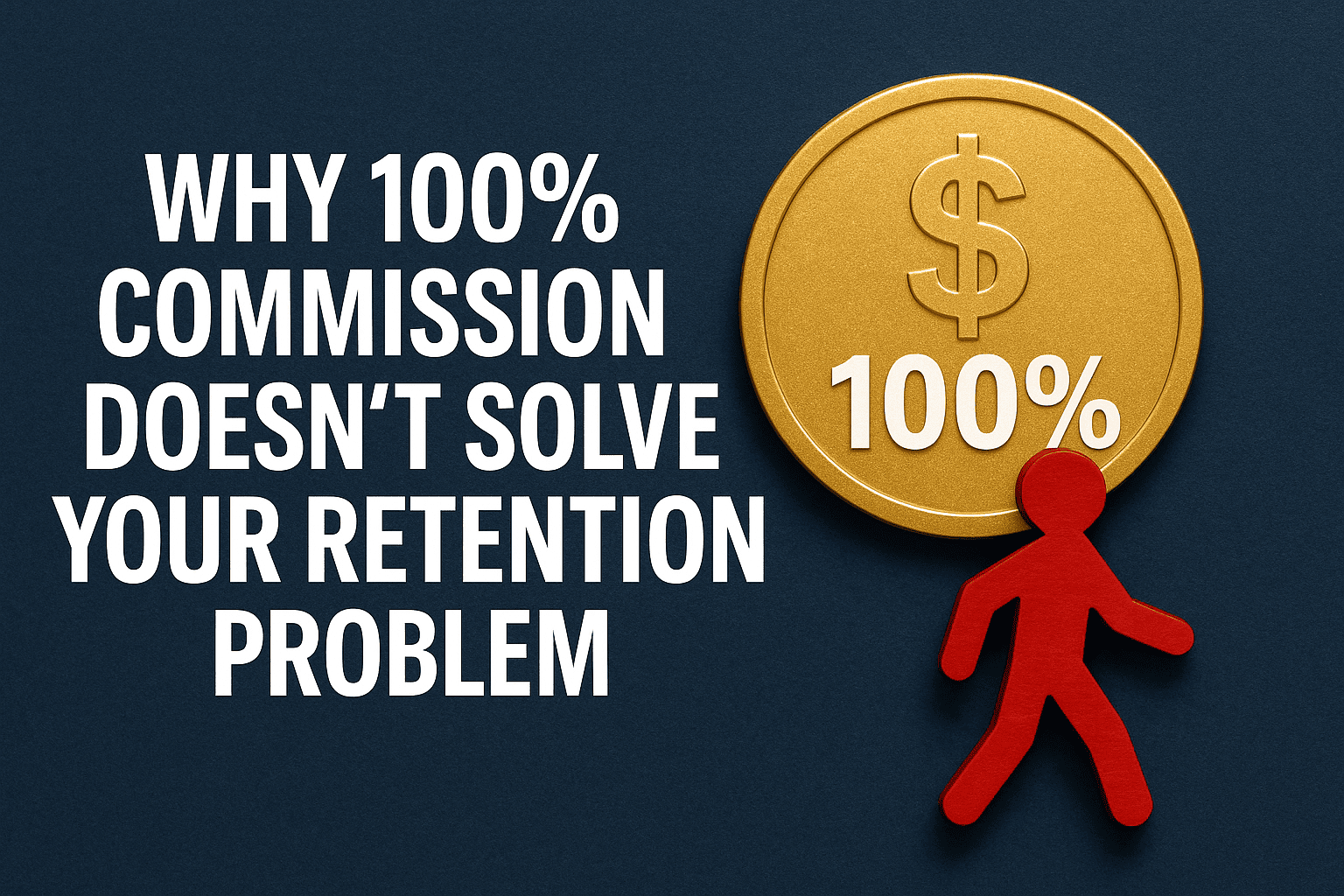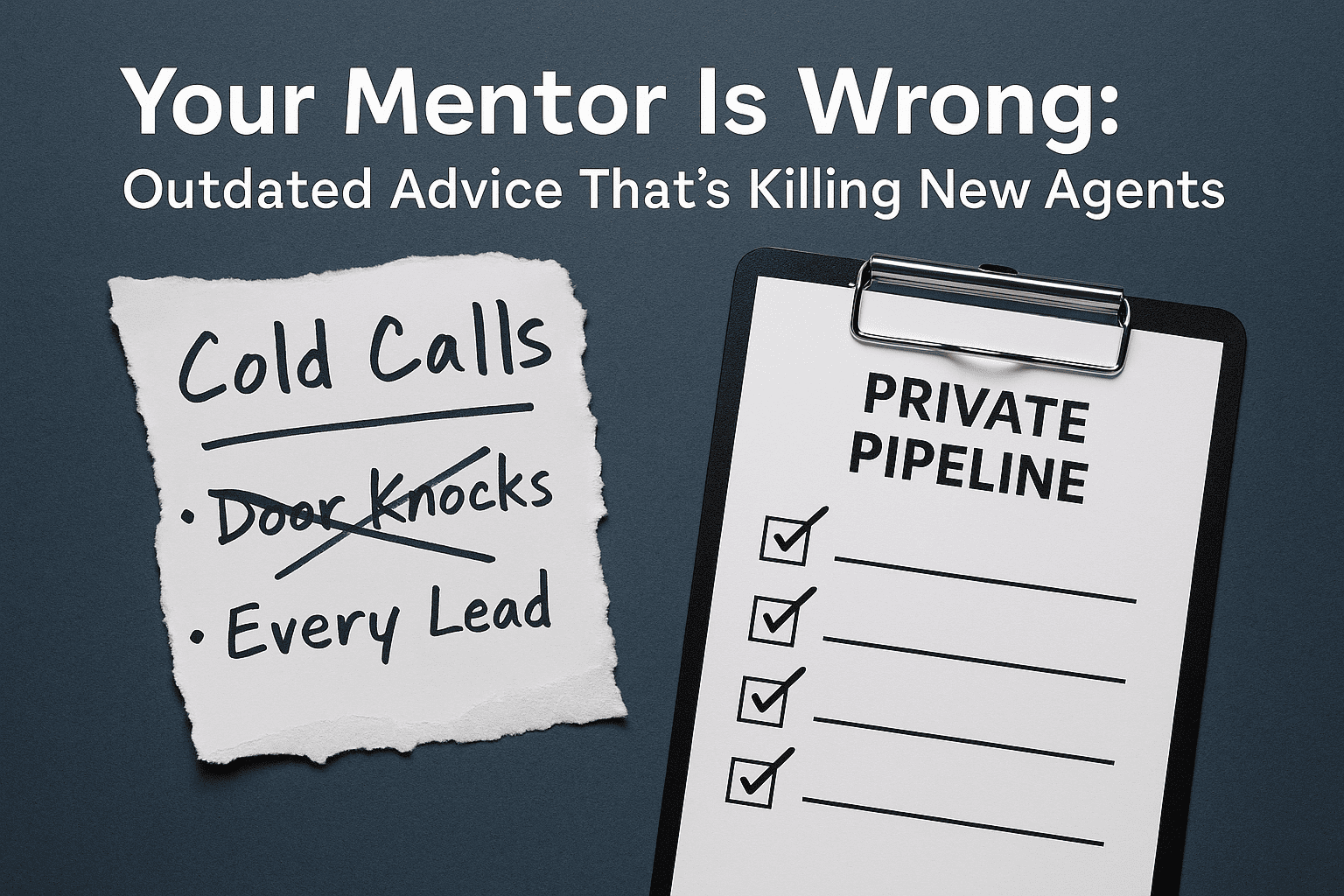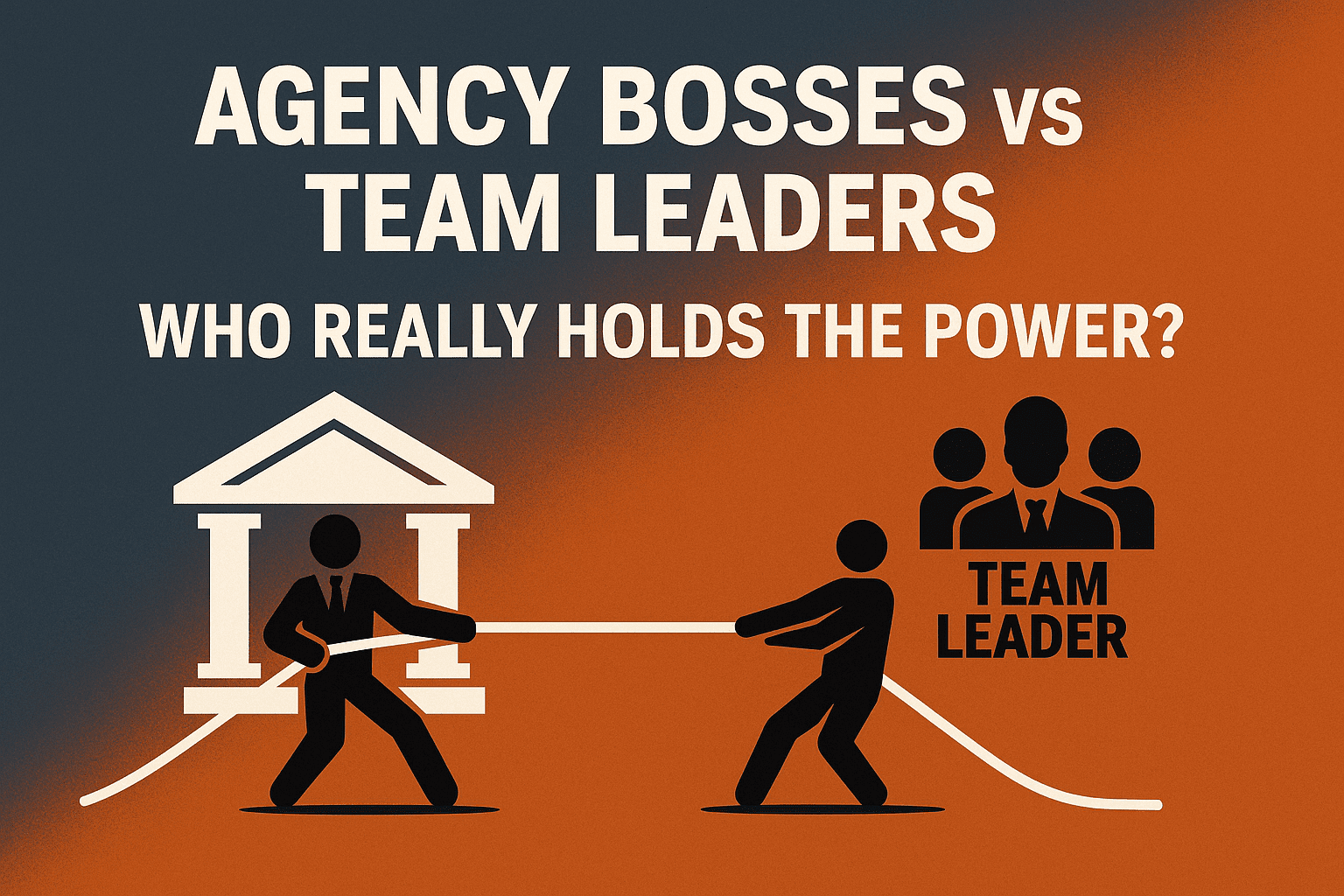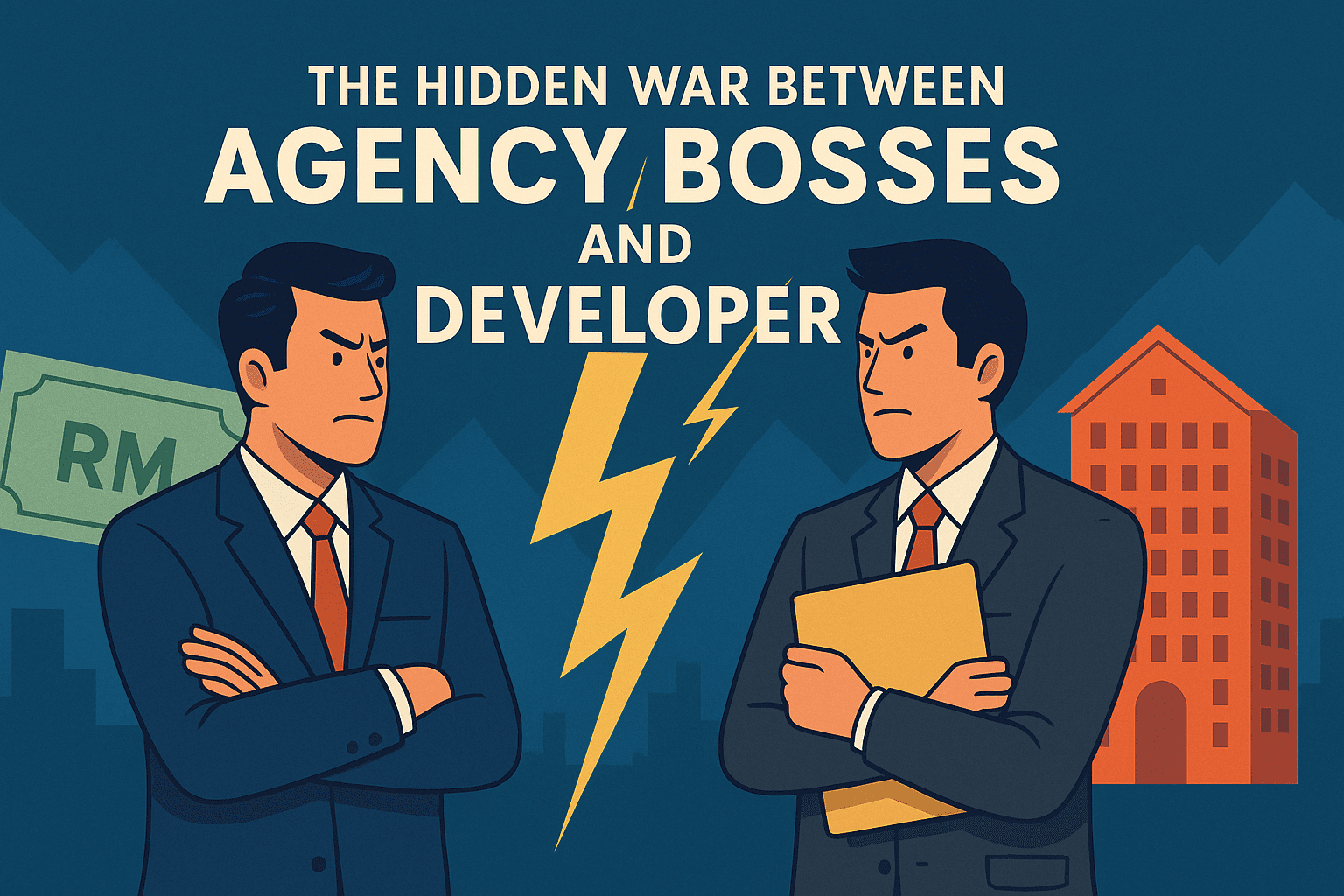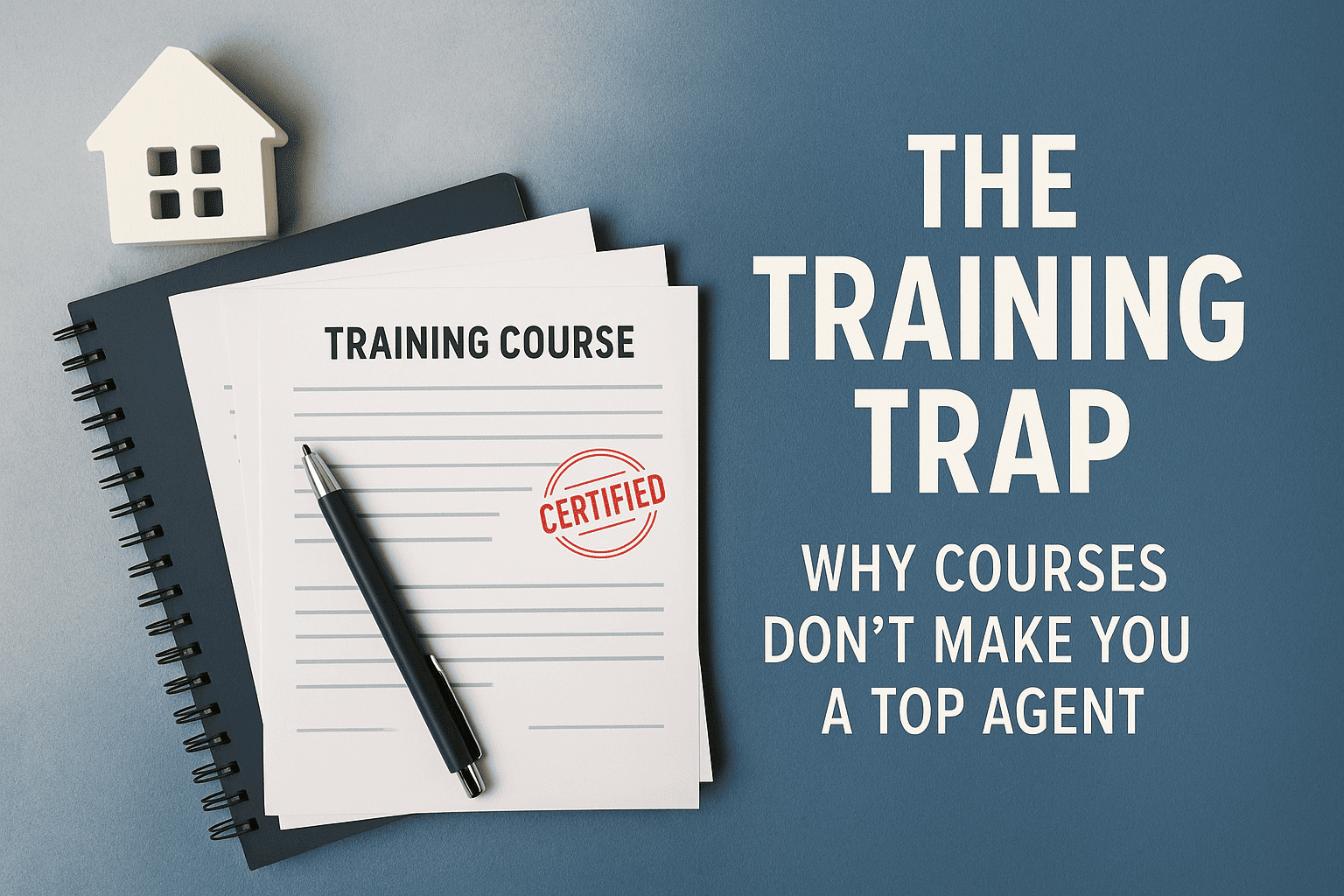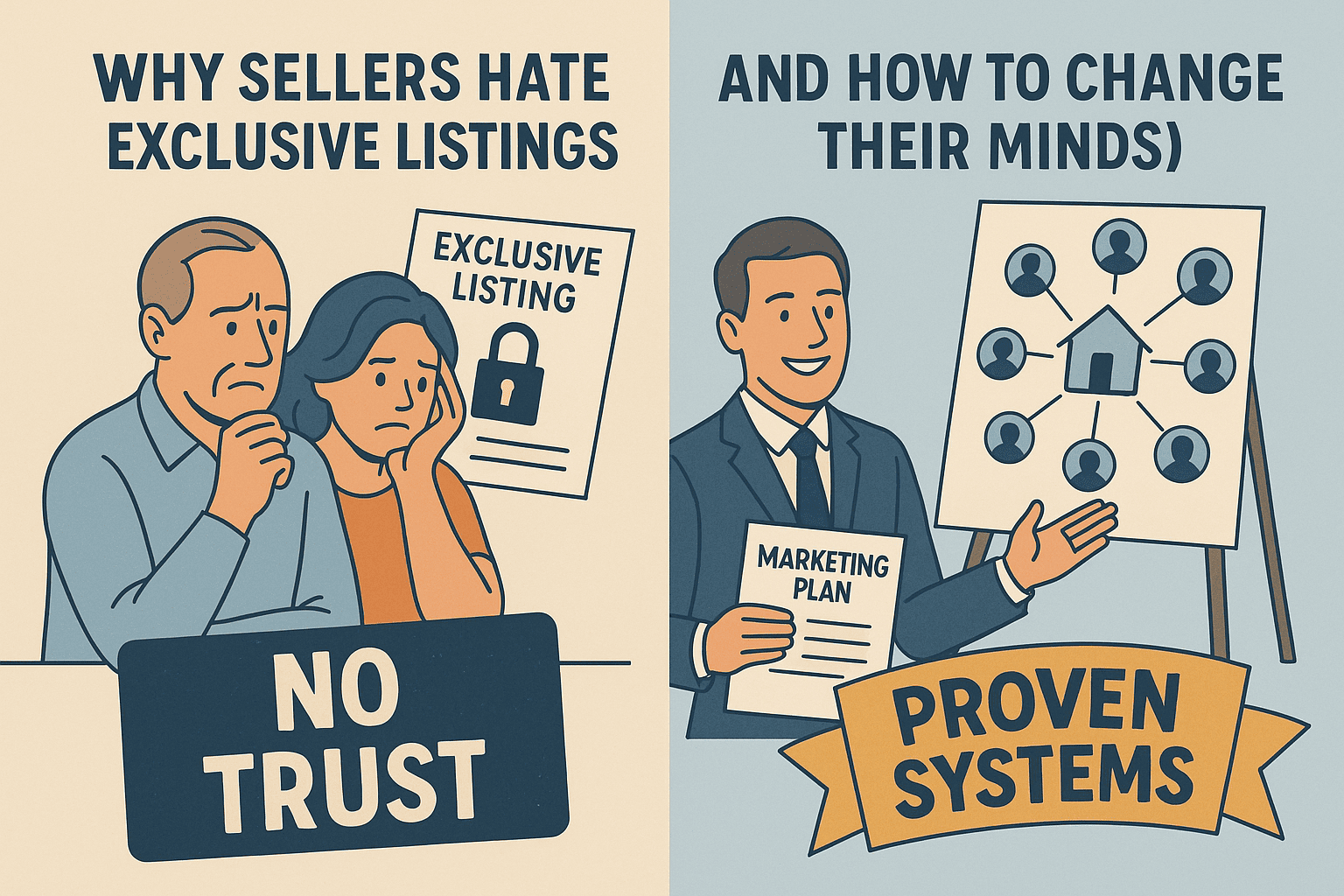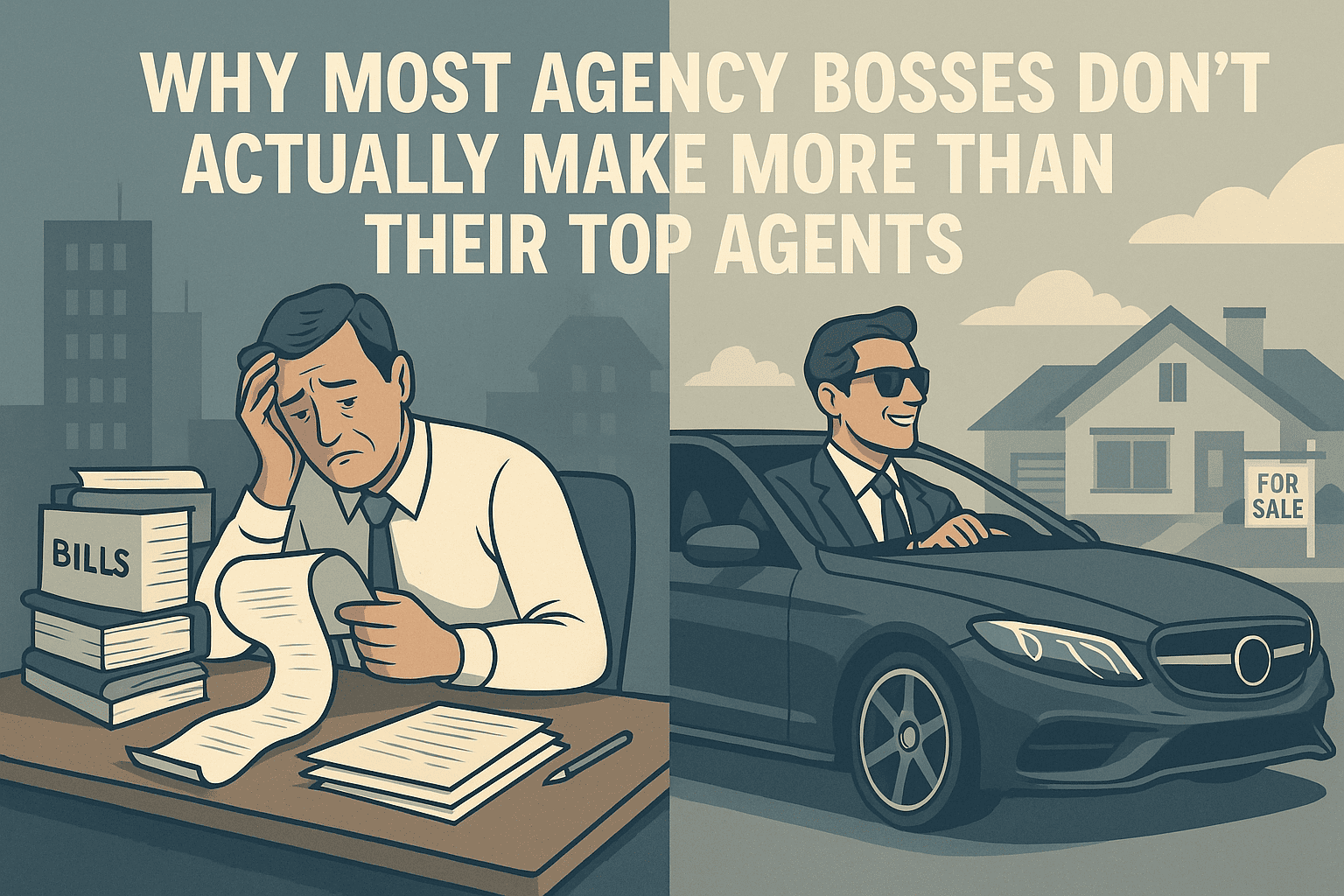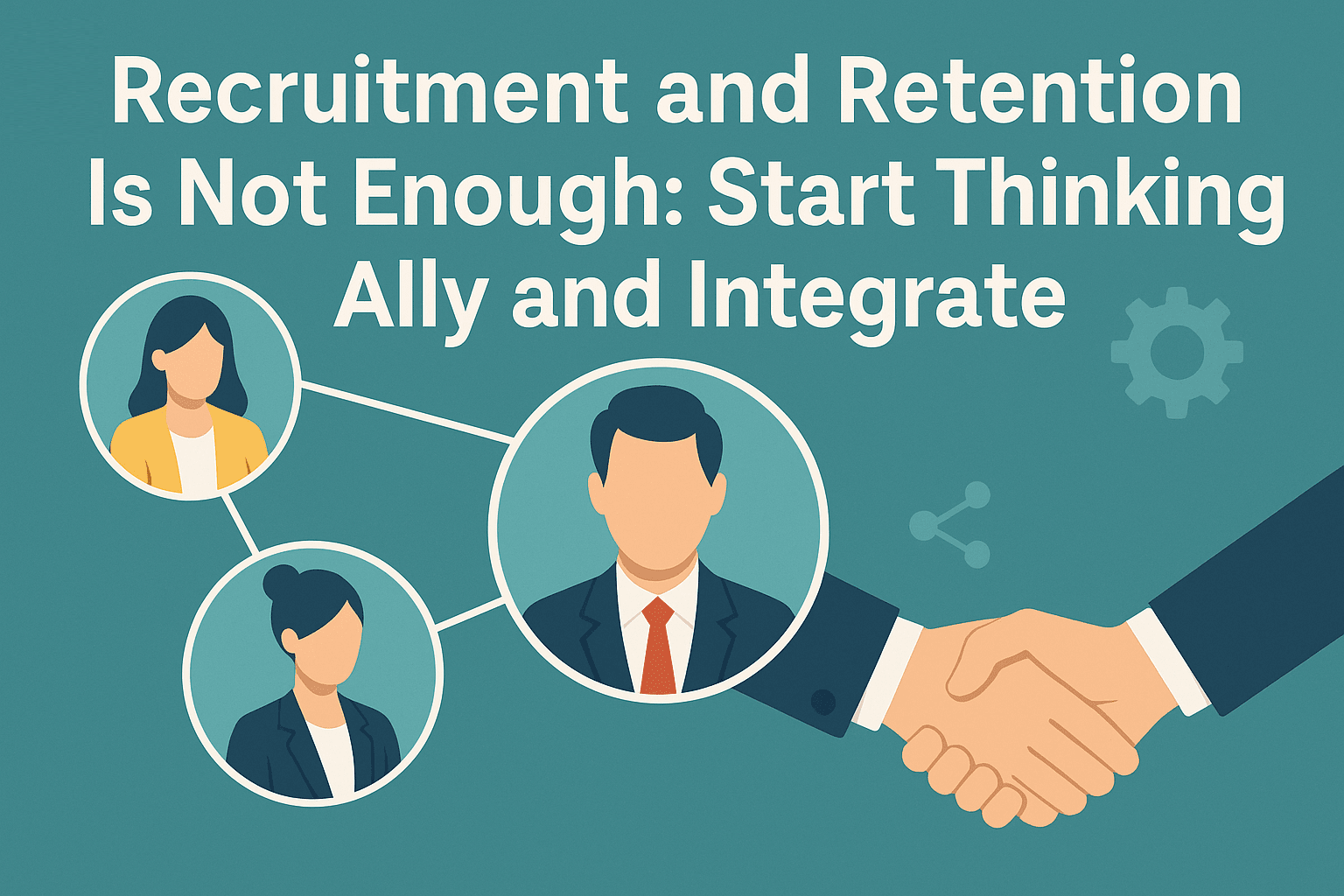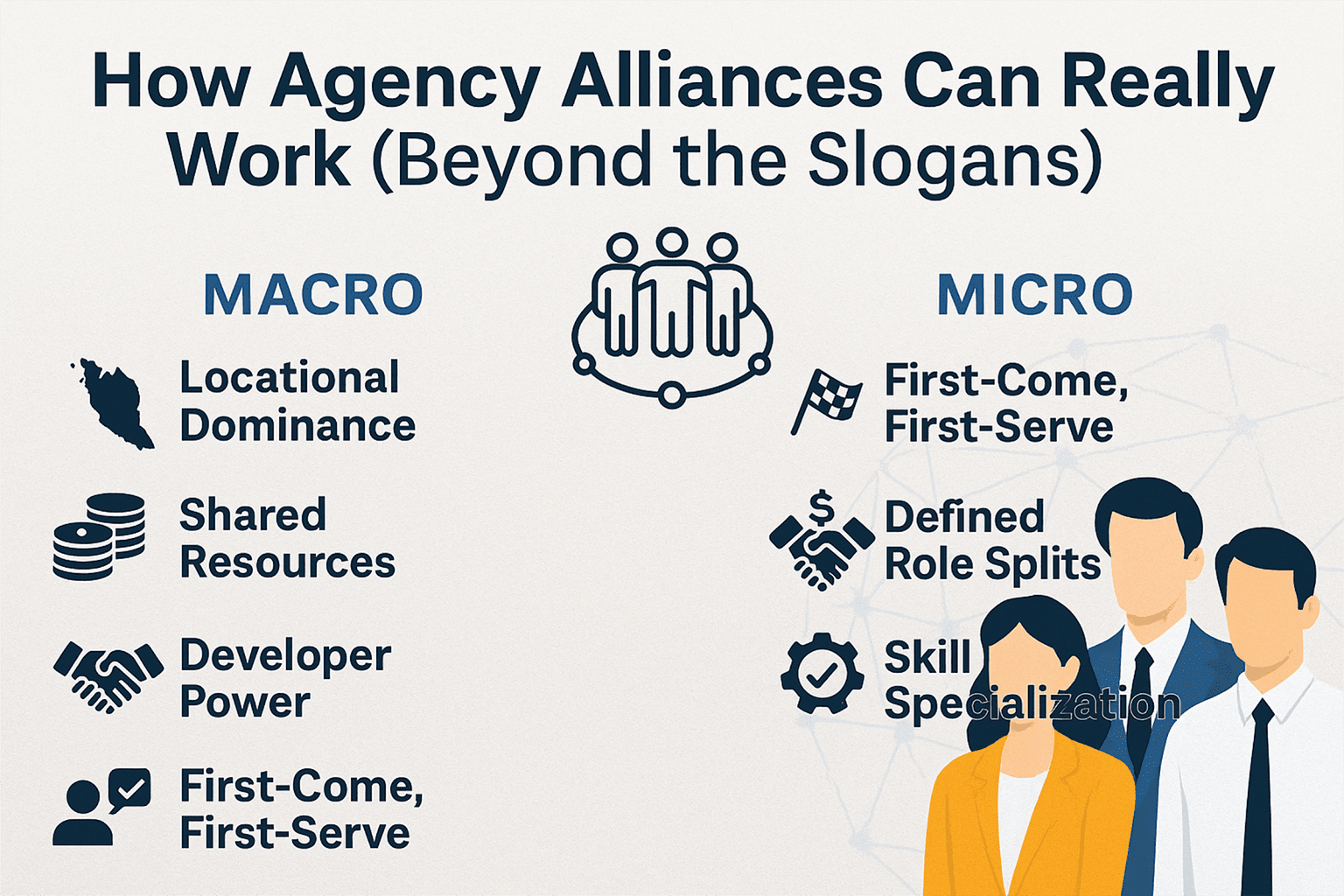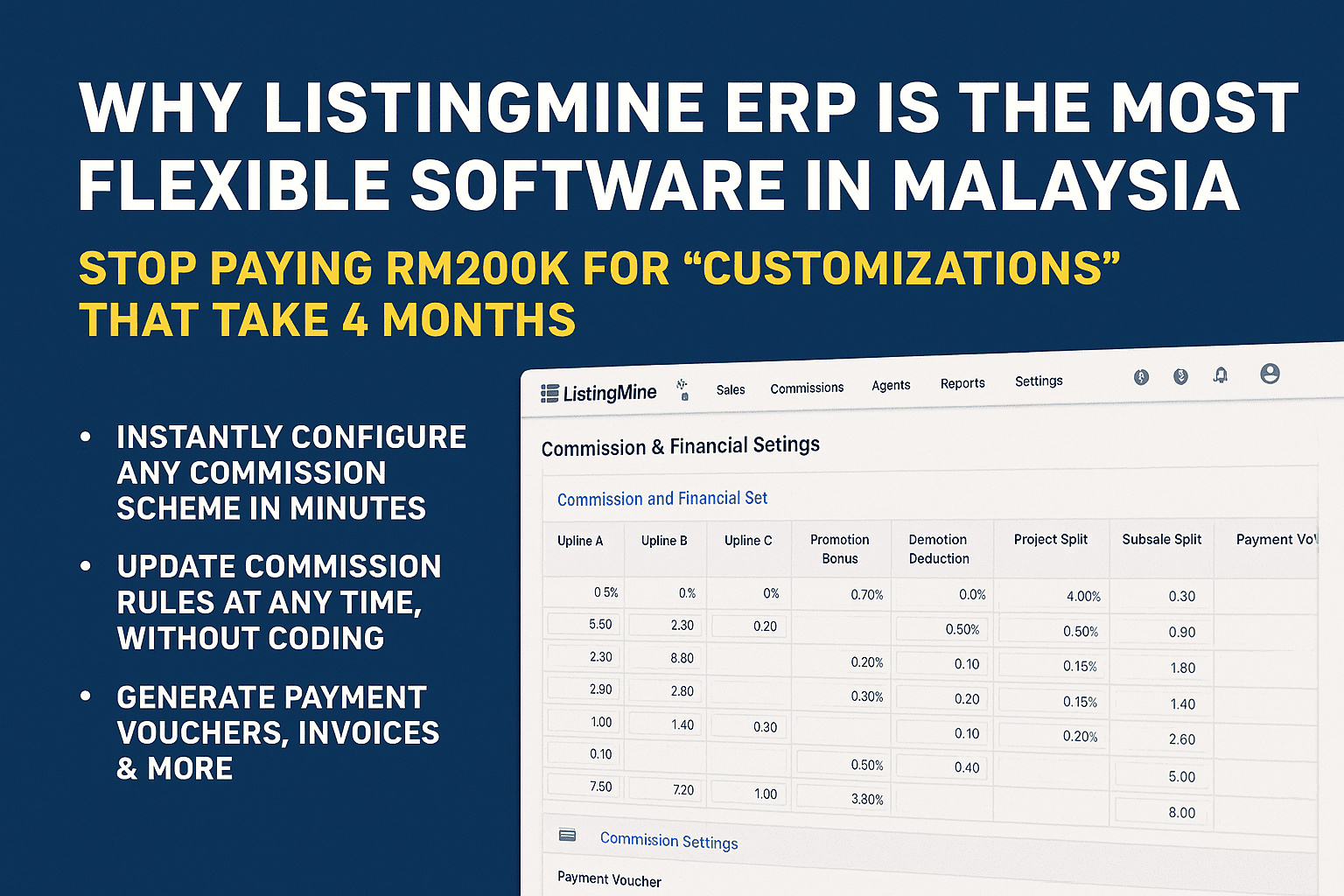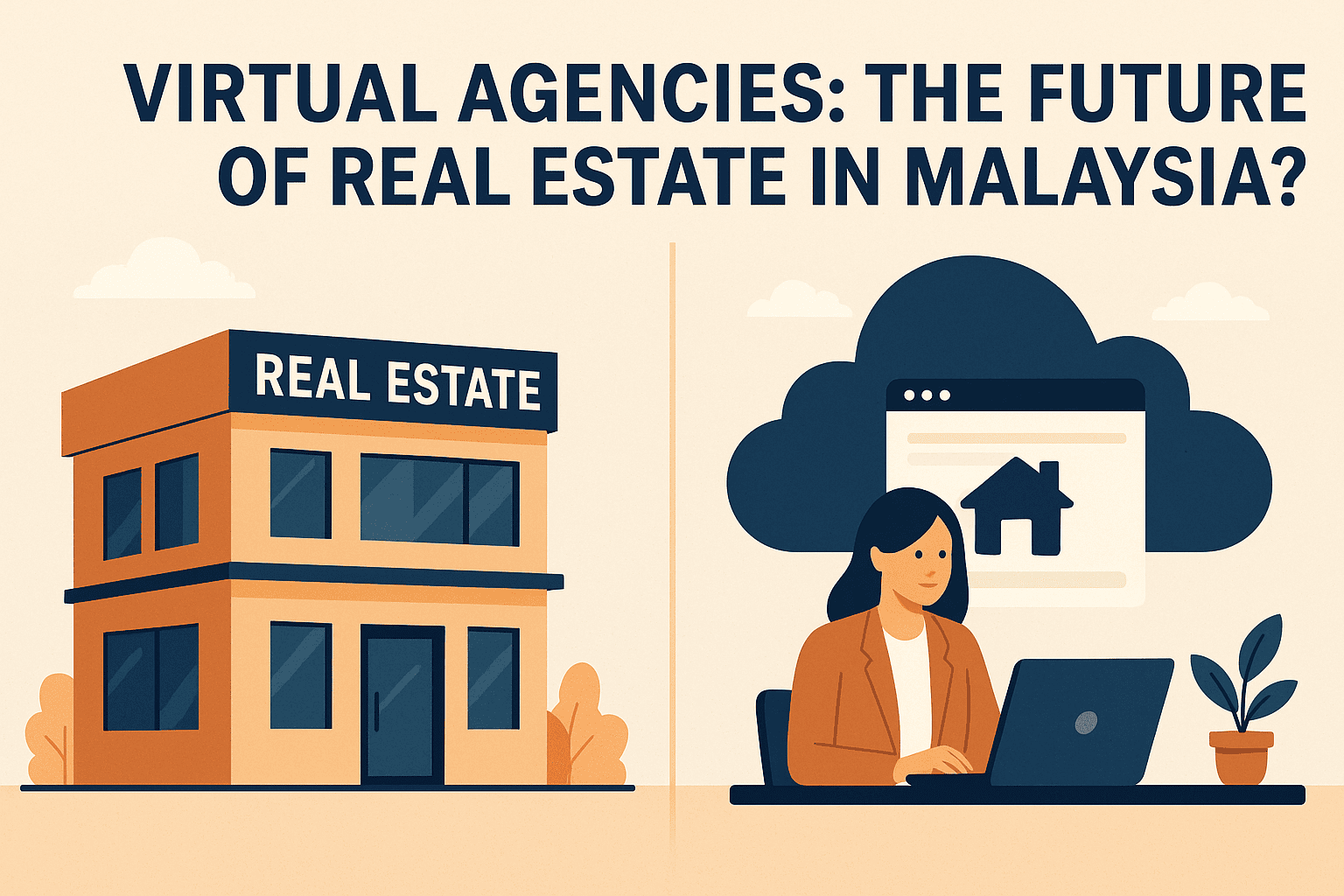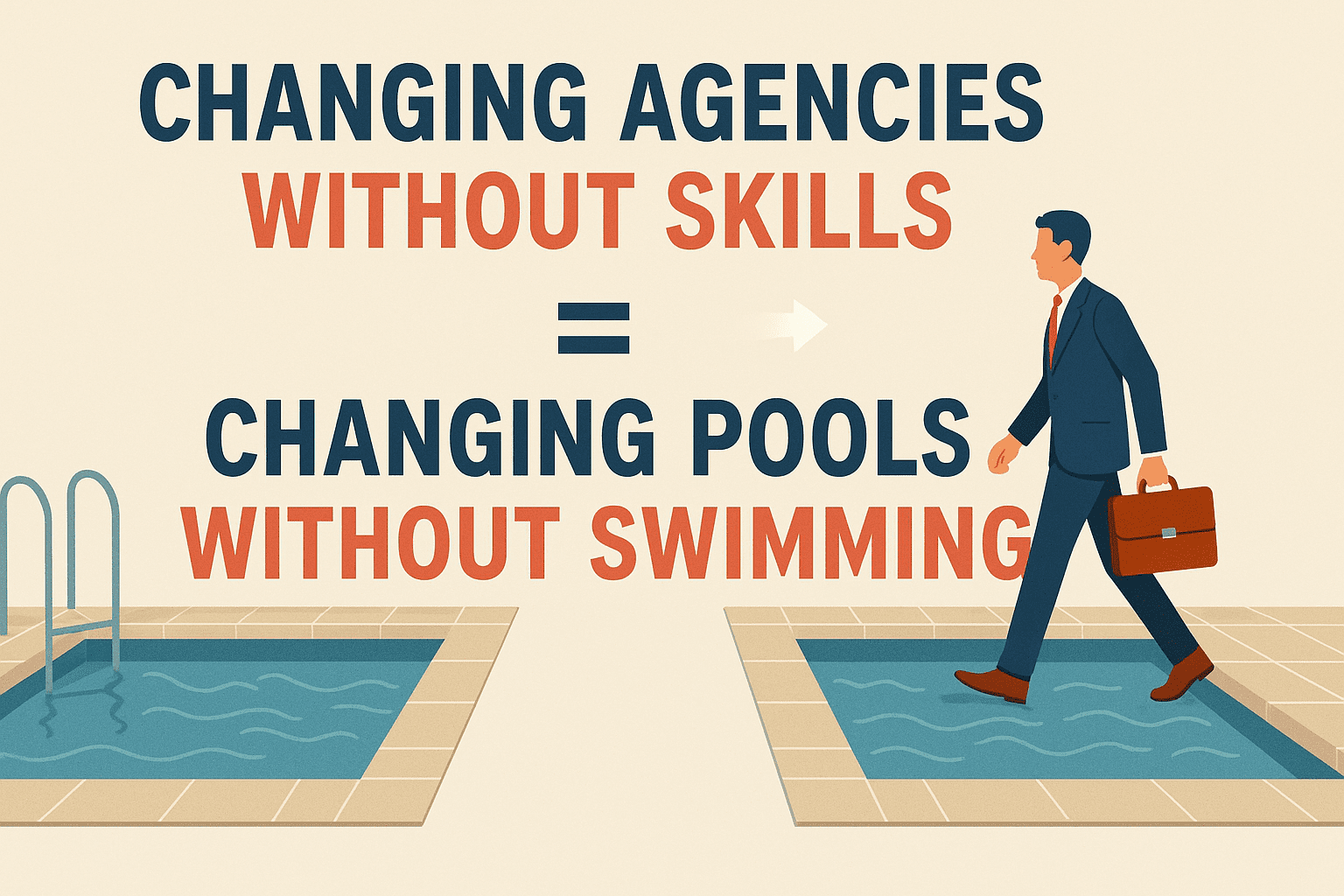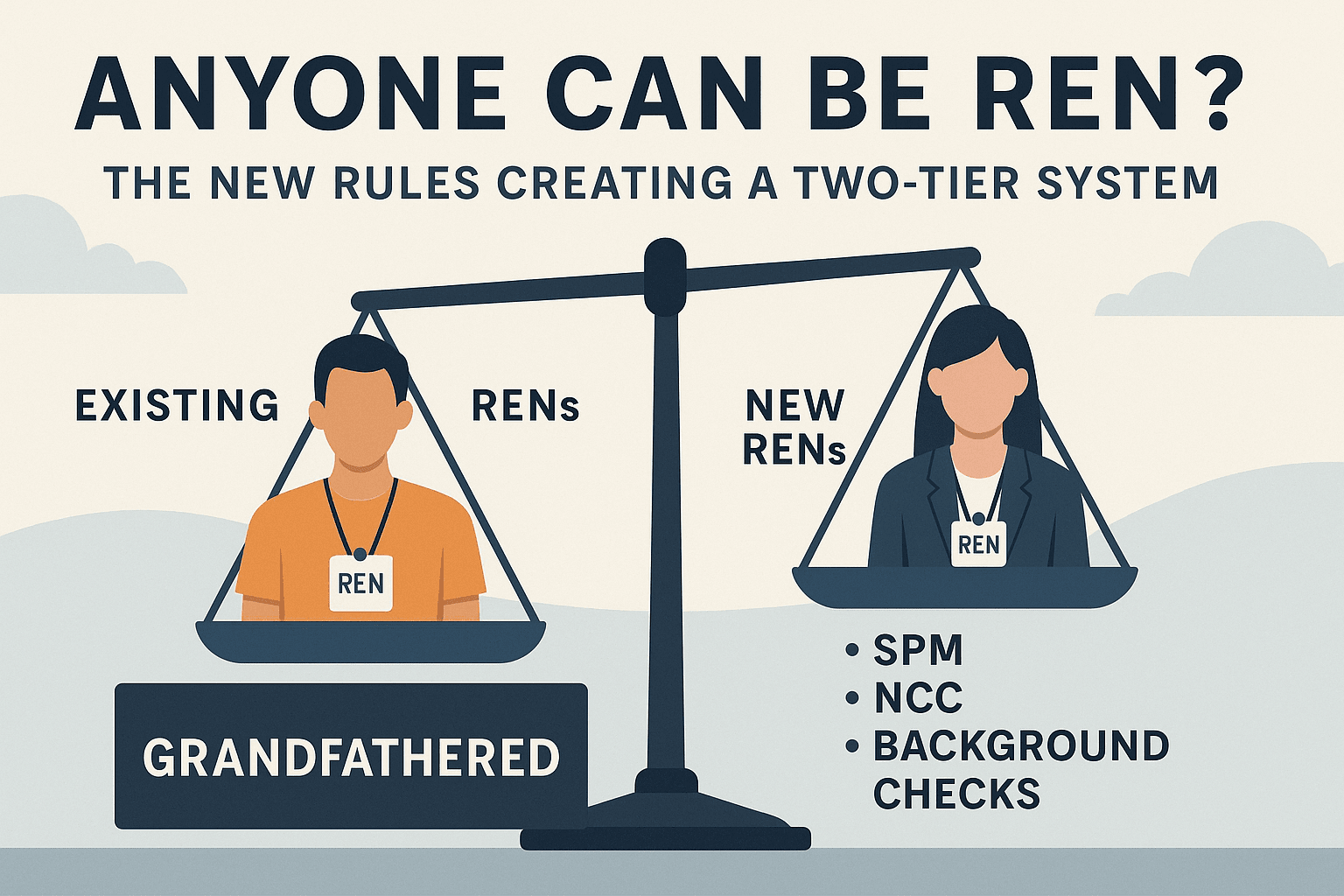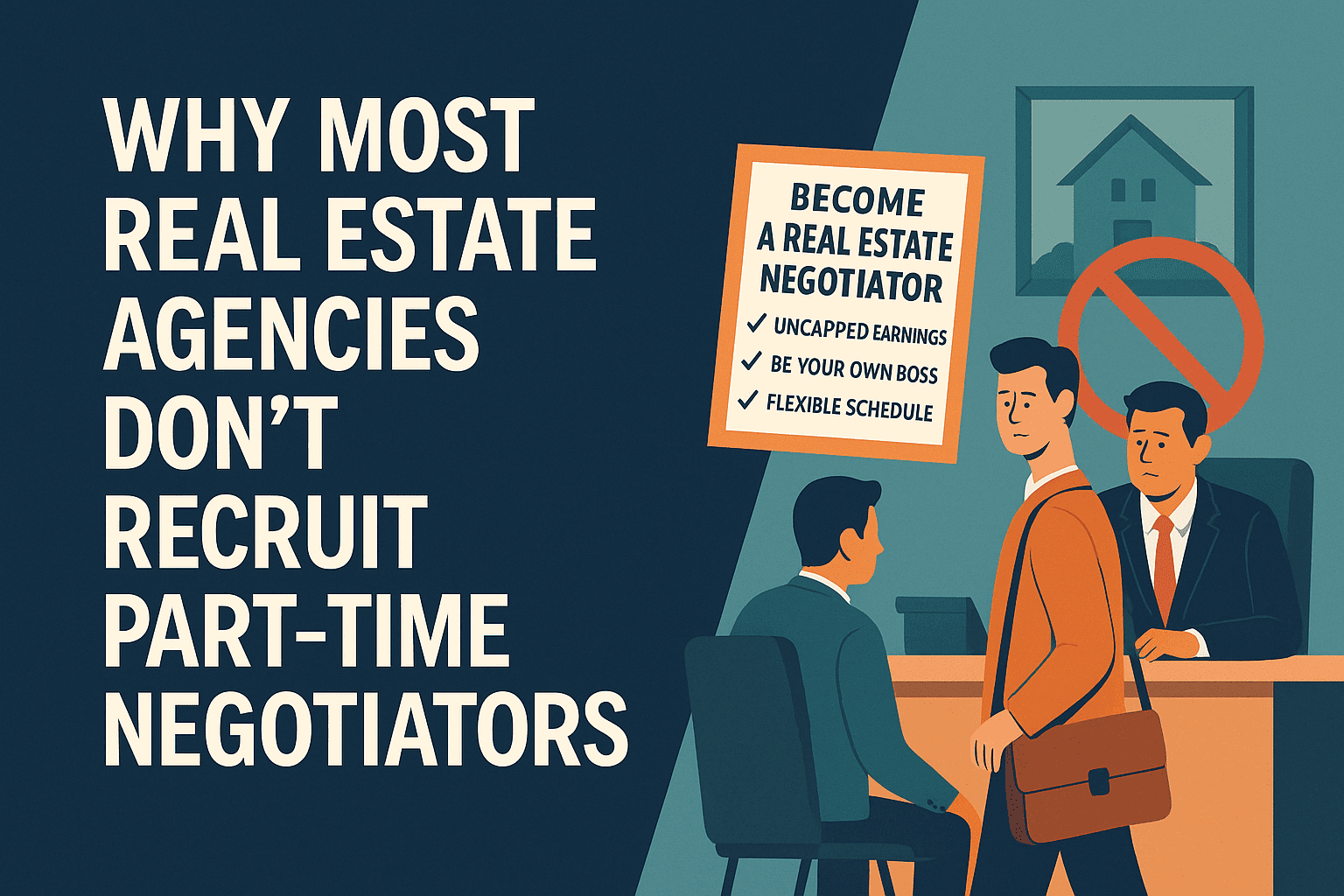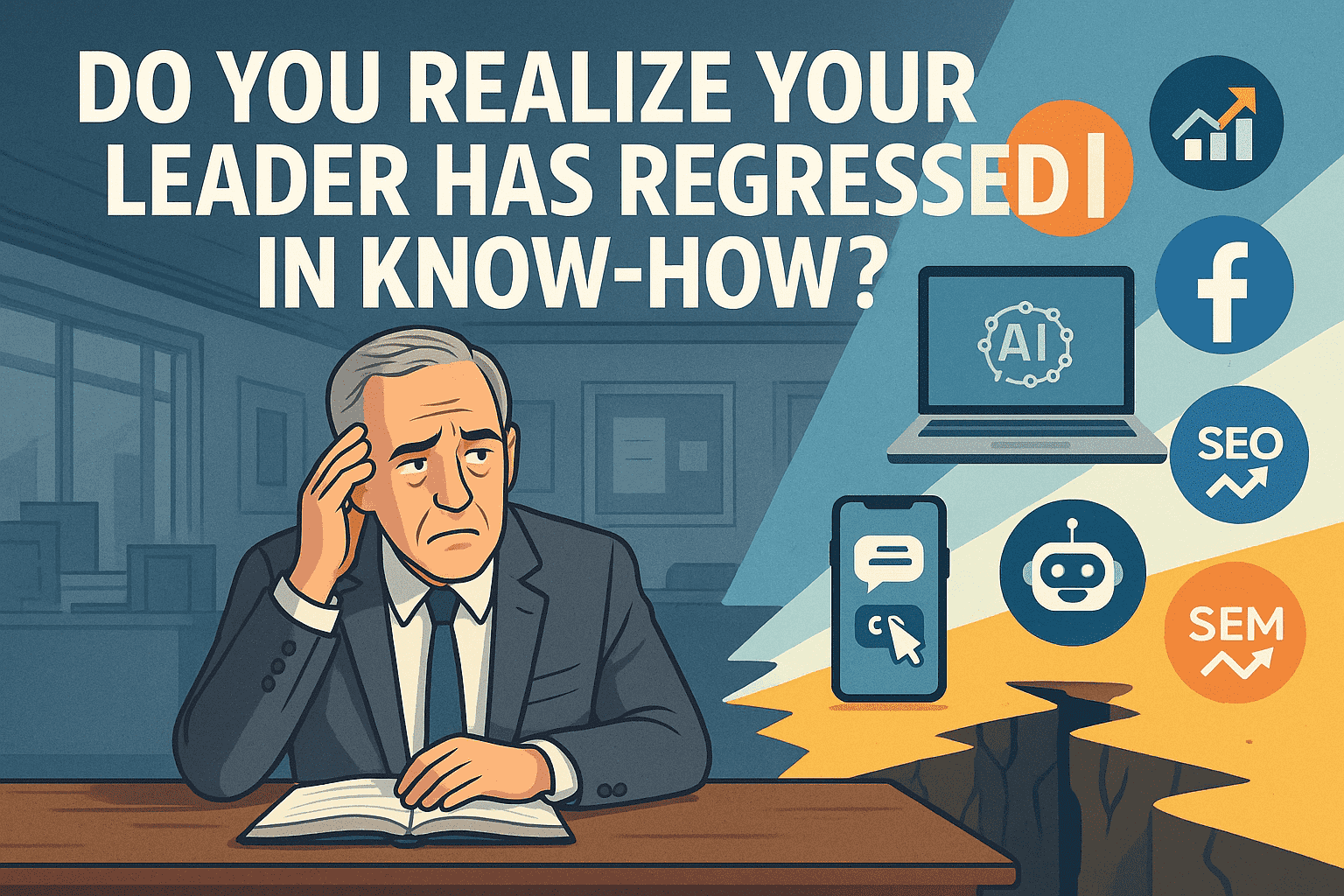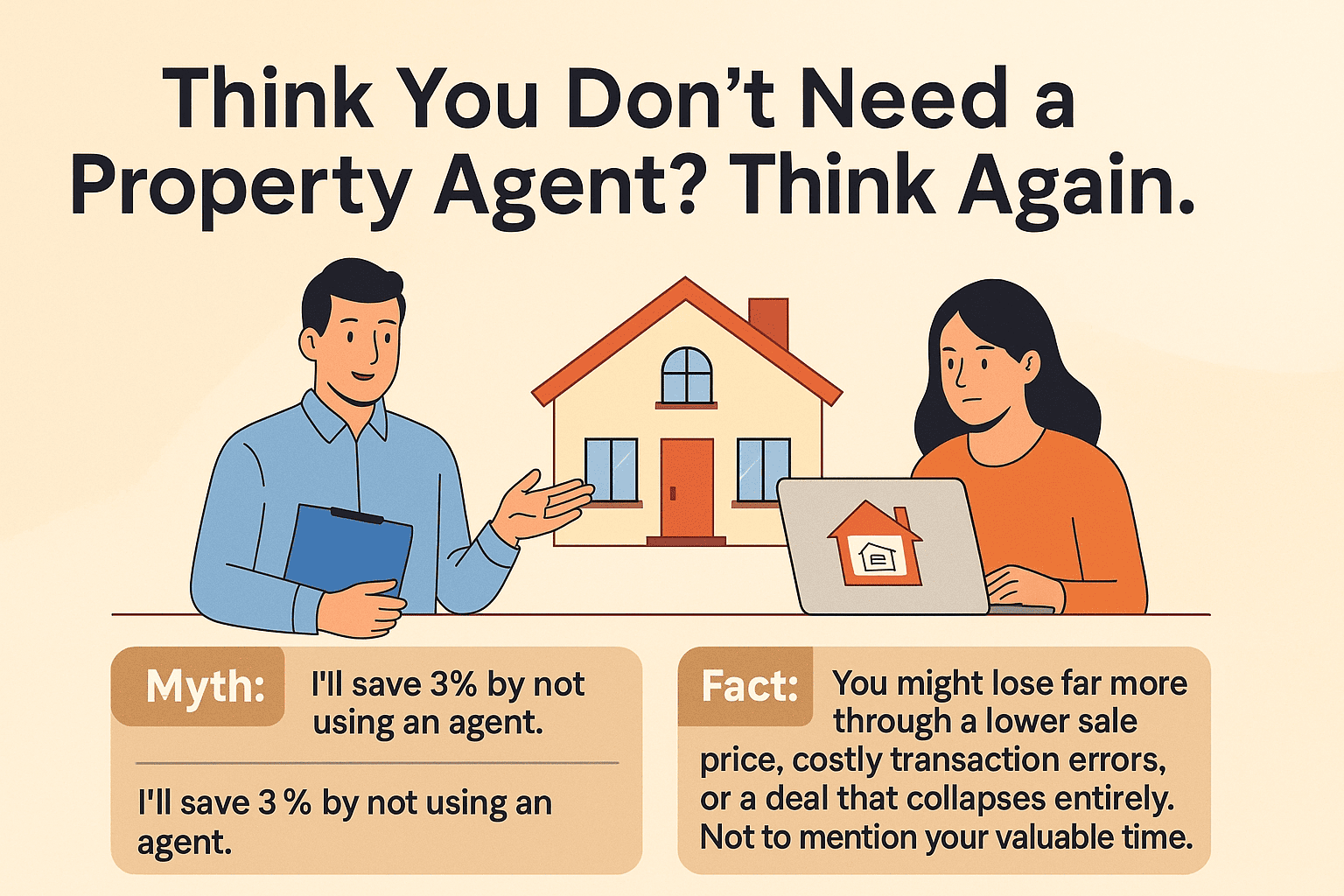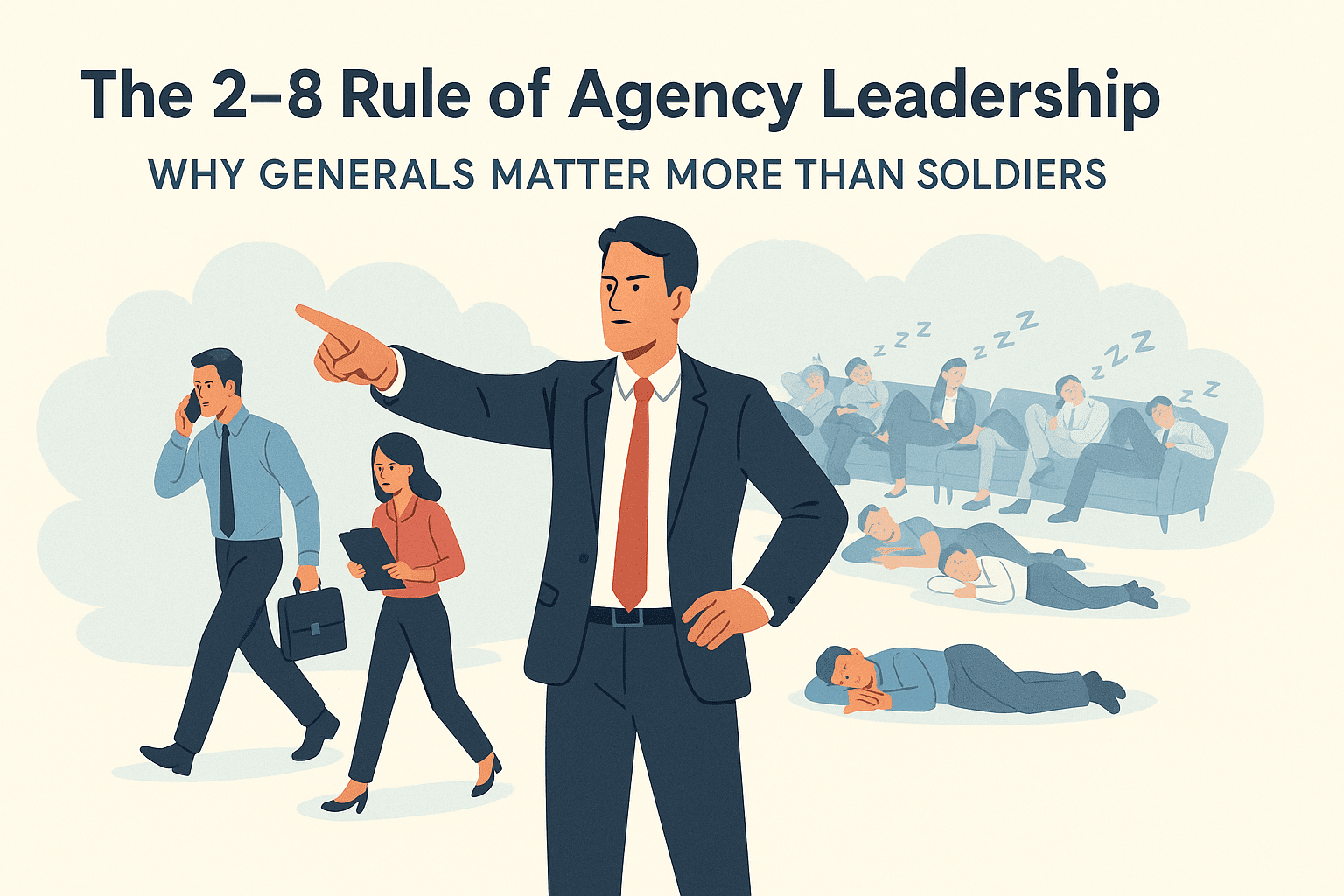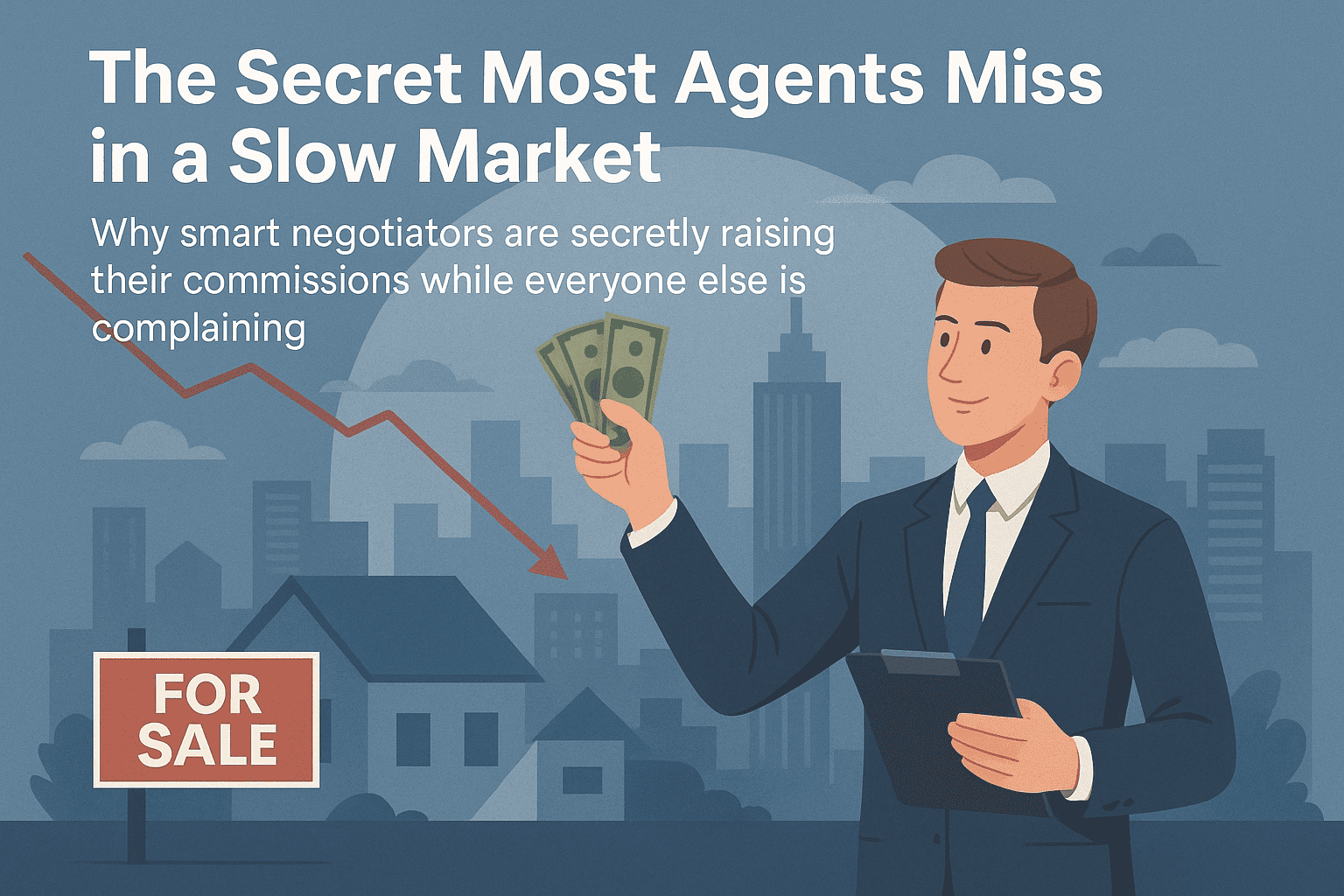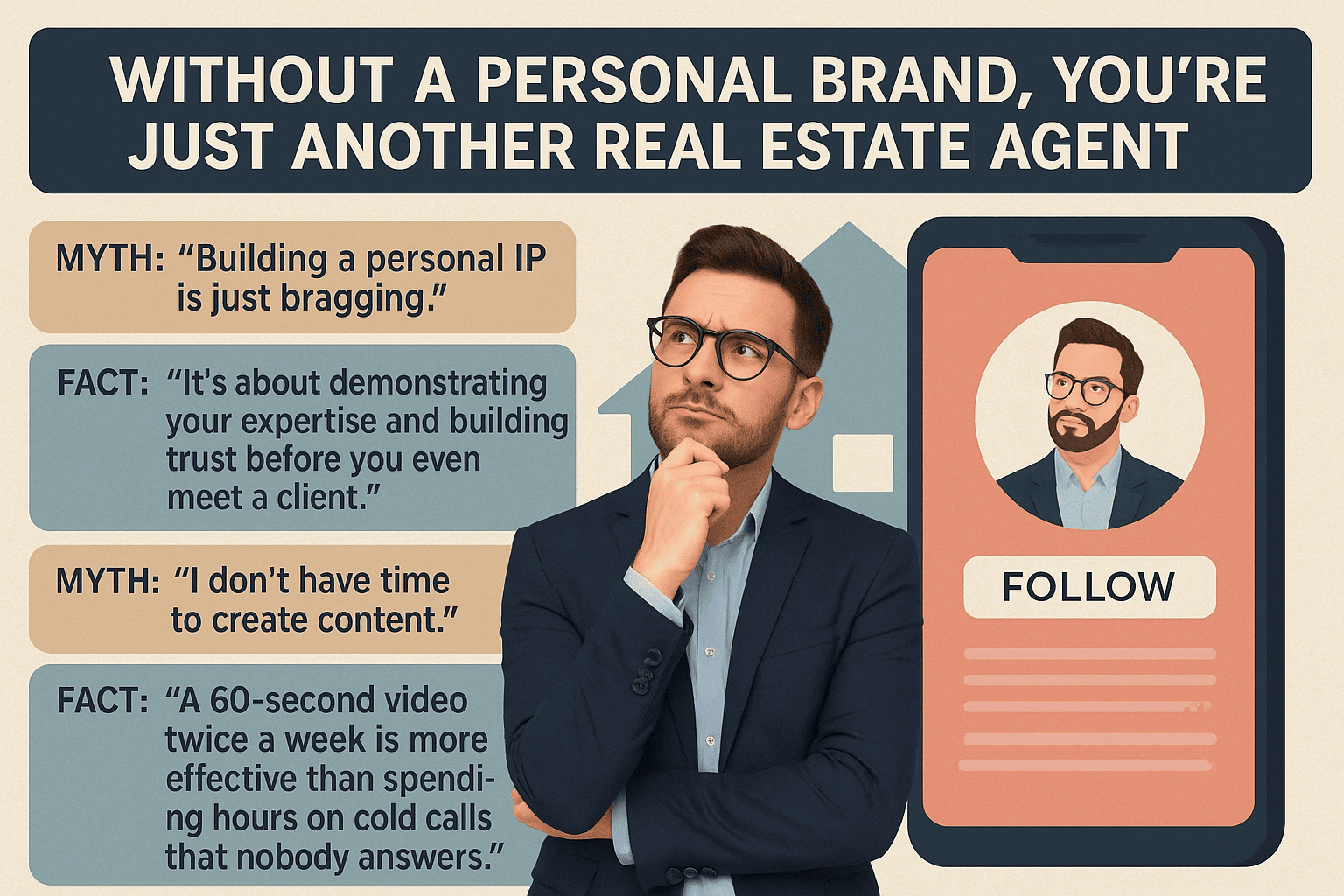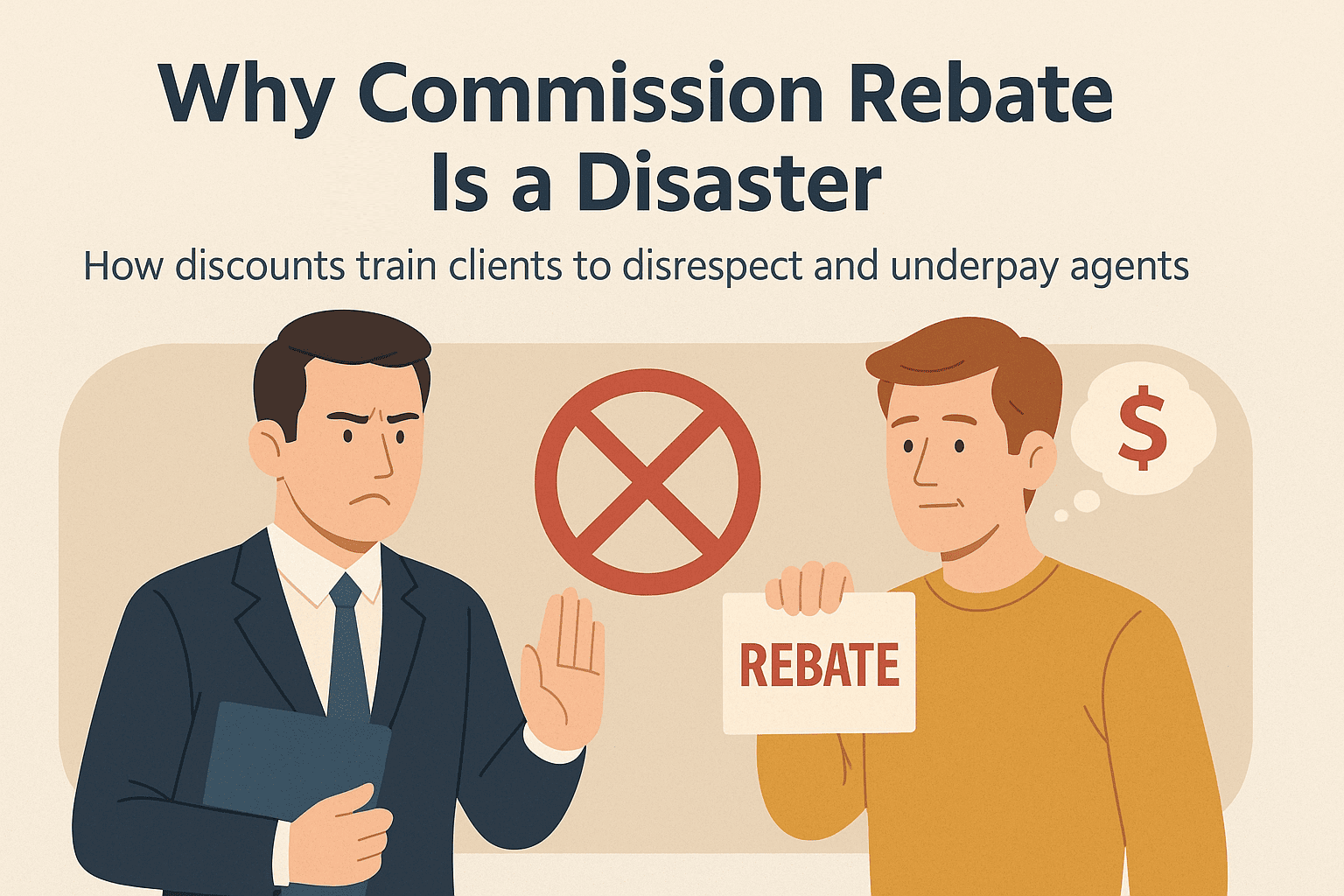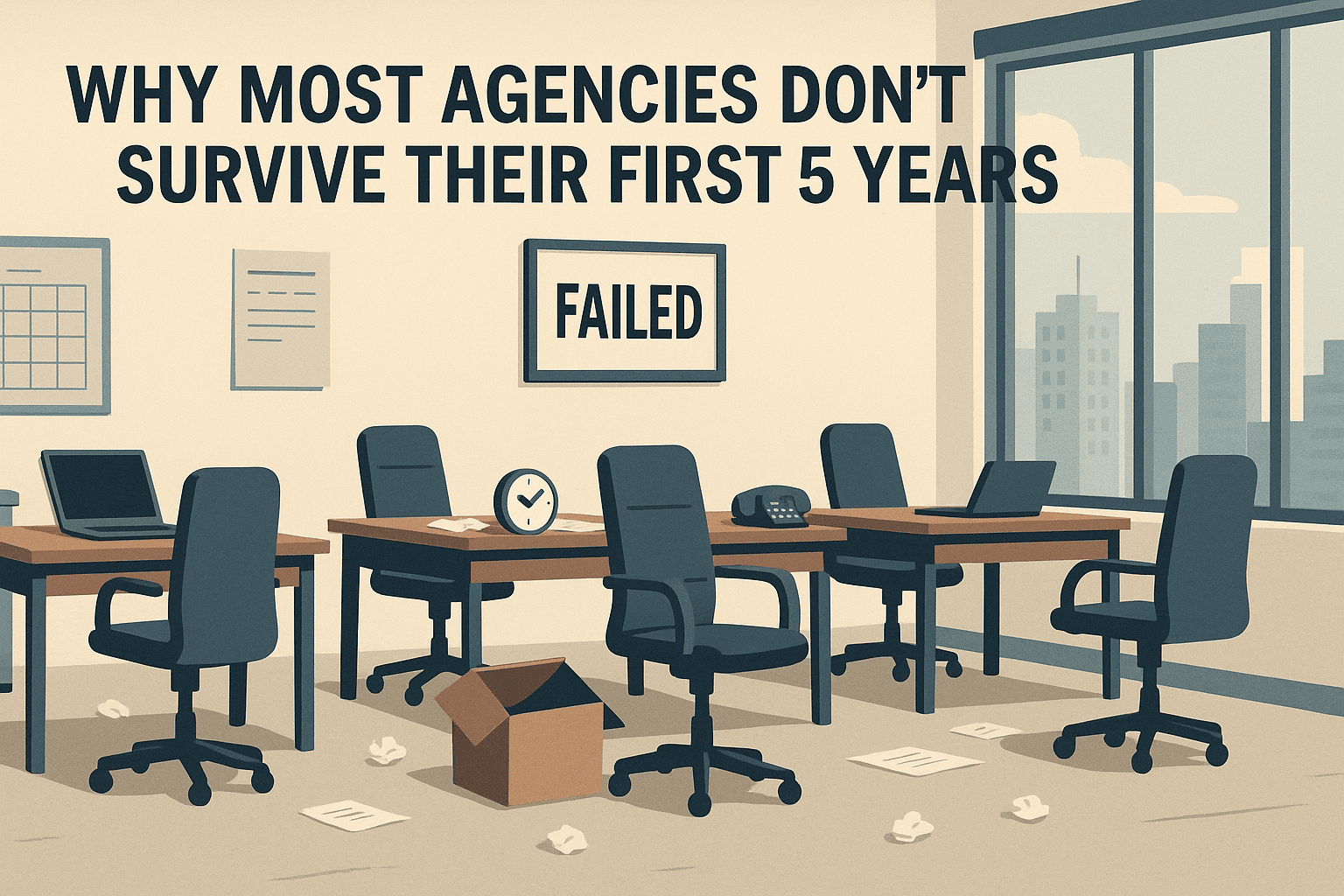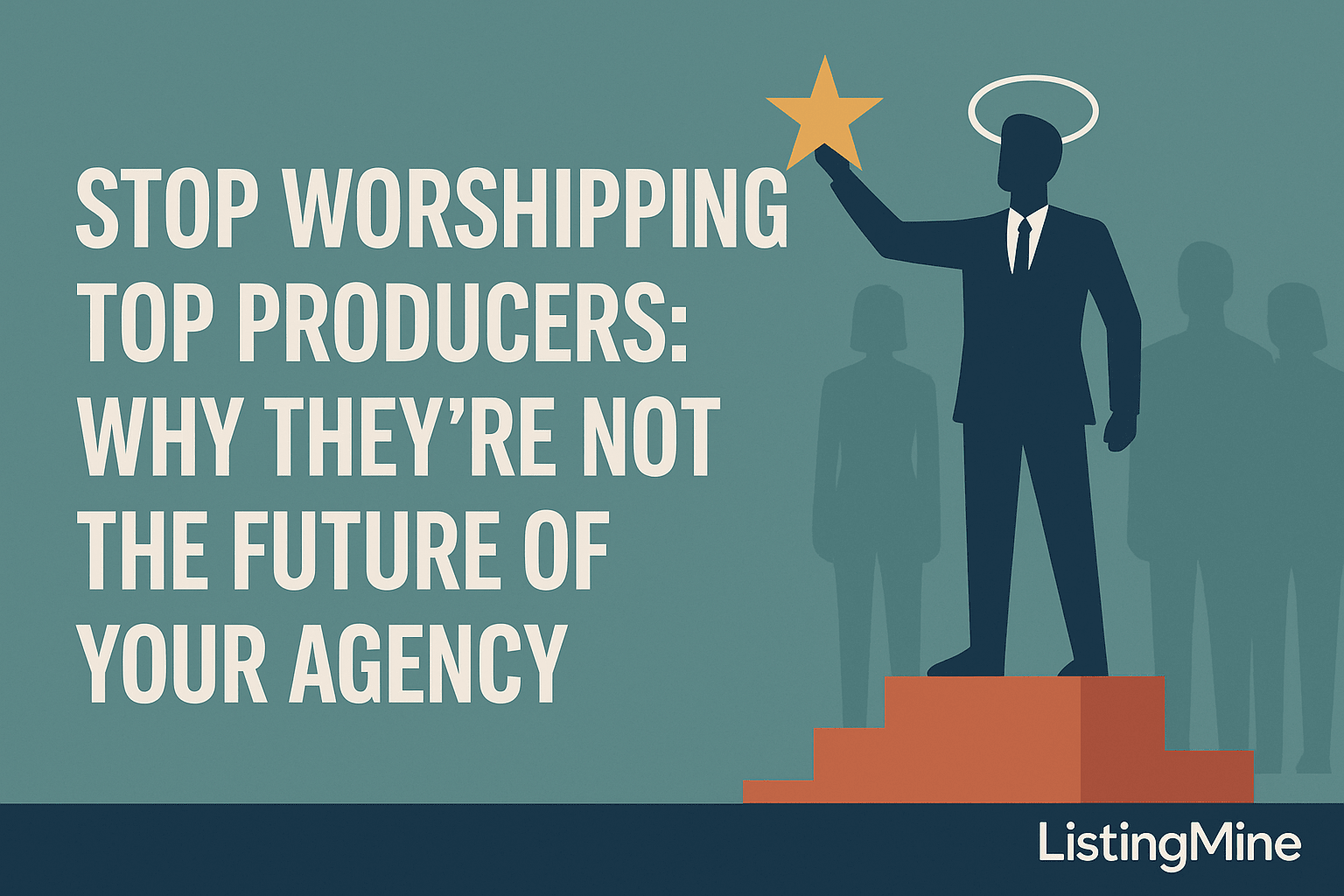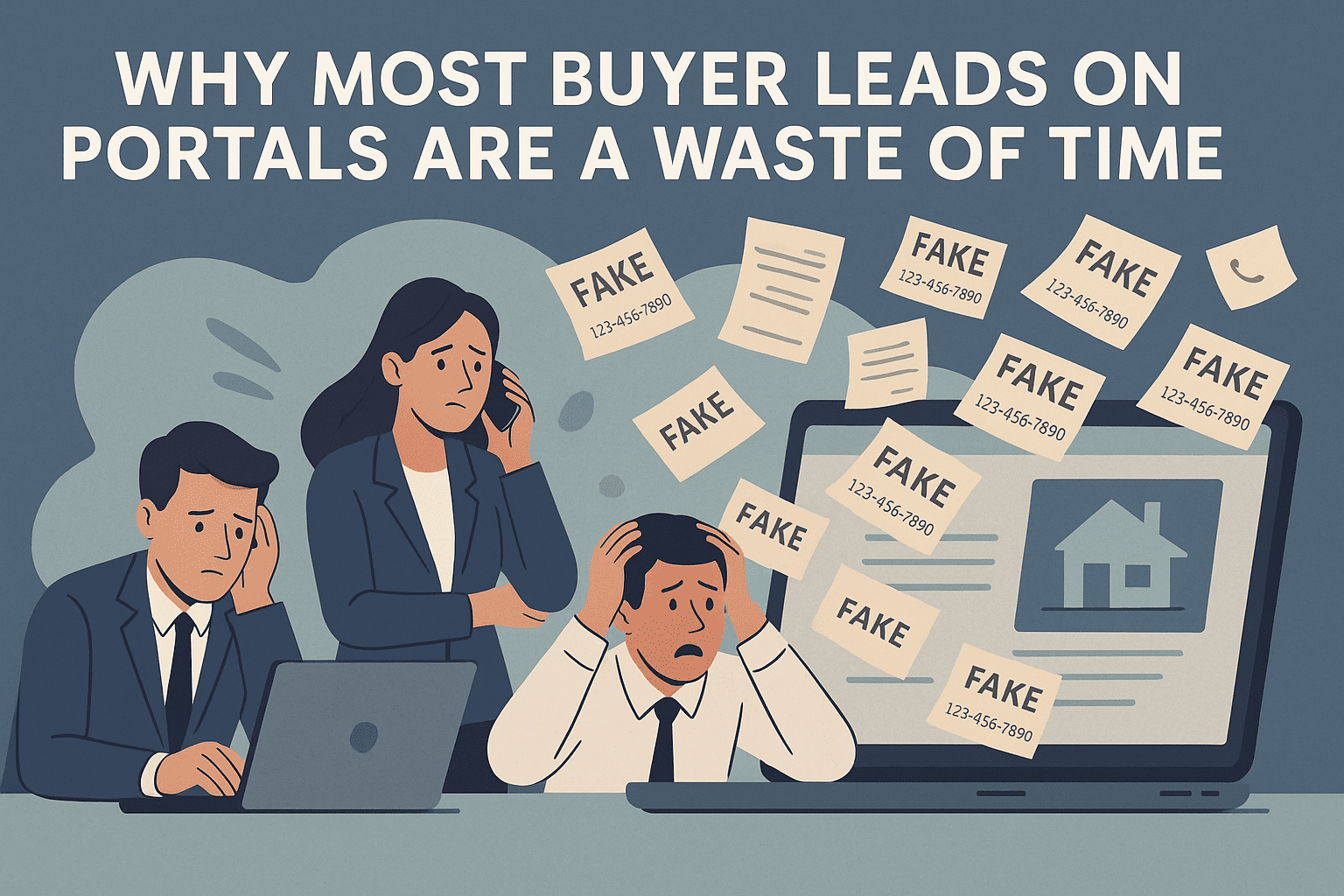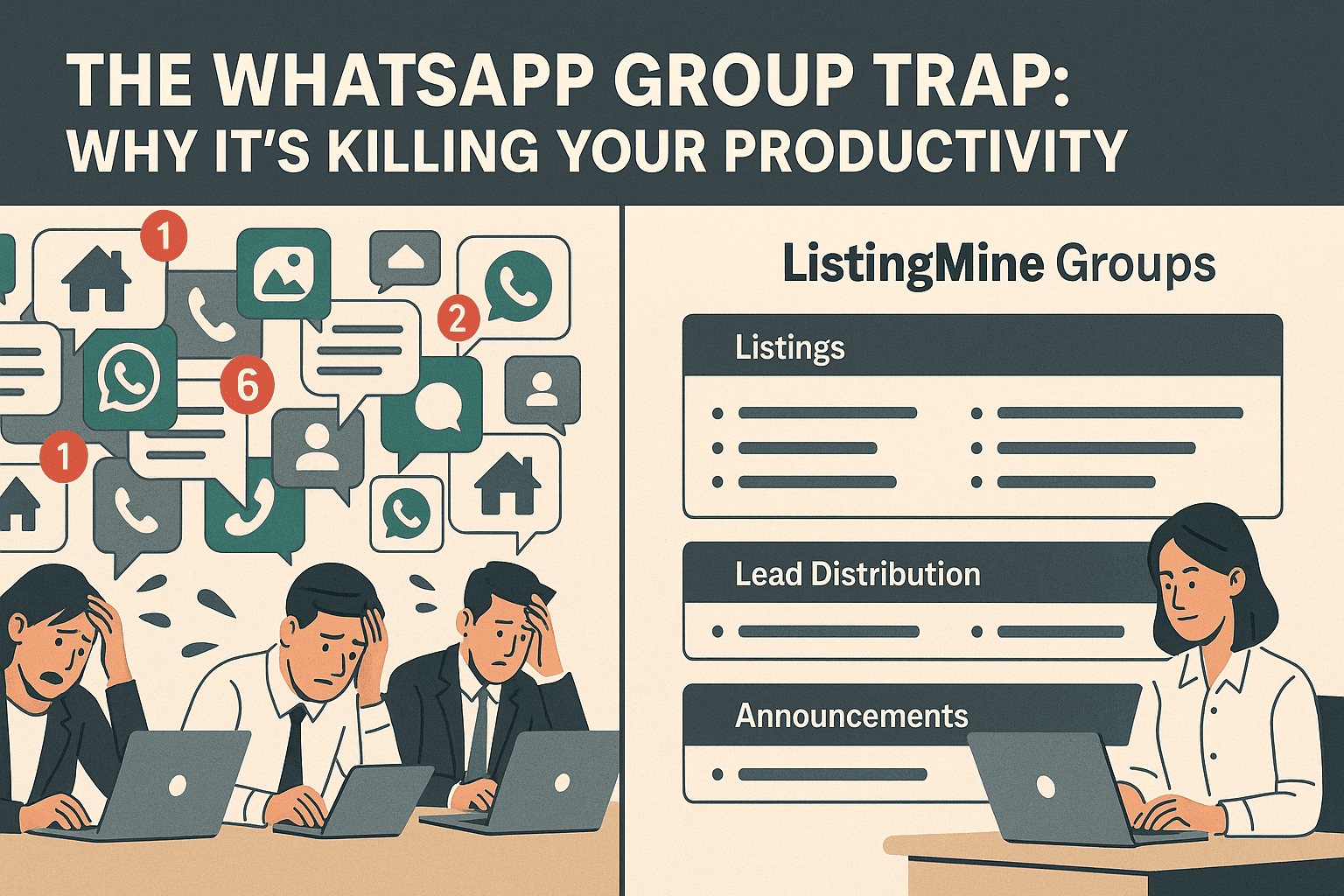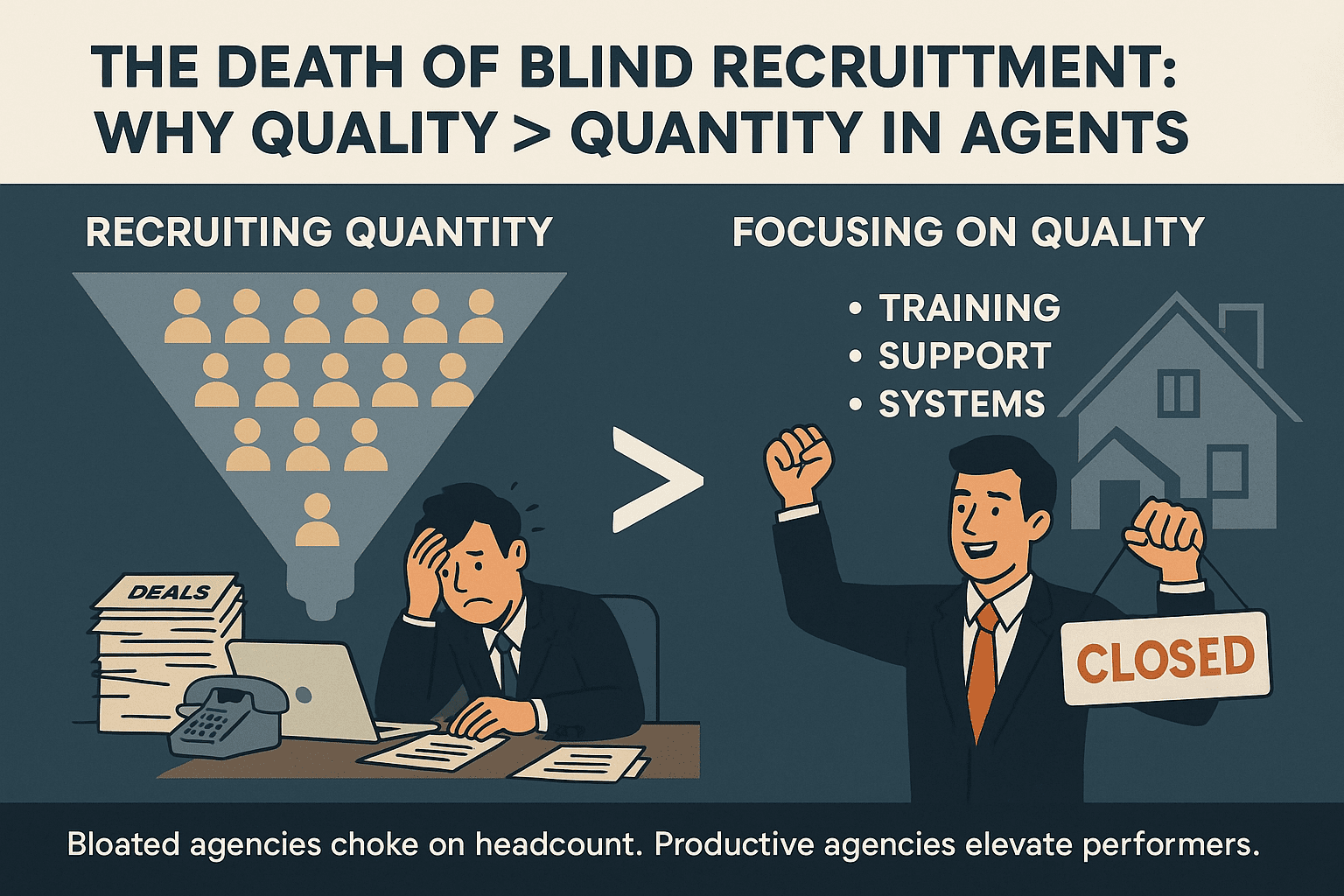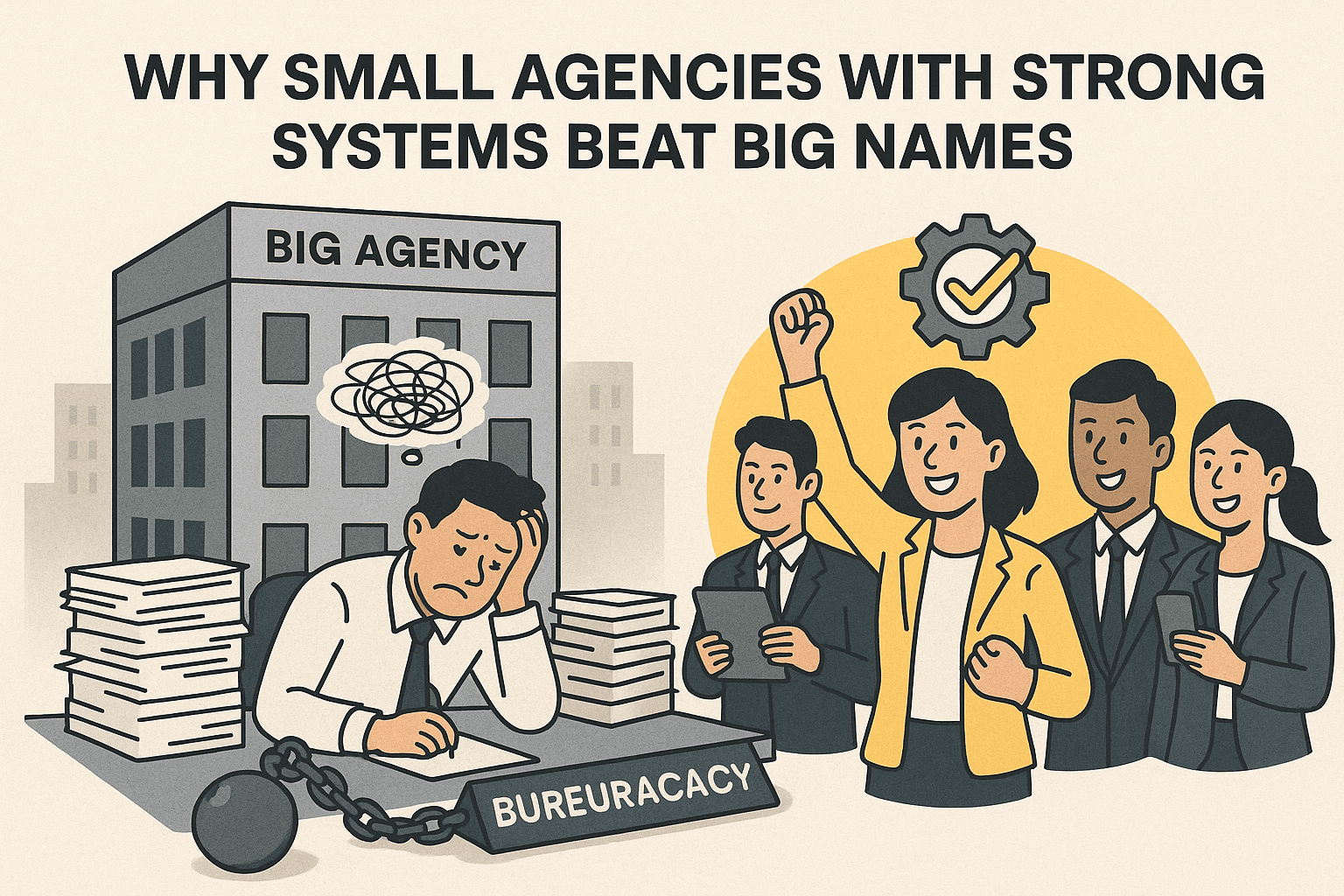What Commission Scheme Should Your Real Estate Agency Adopt? A 2026 Guide for Malaysia

A strategic breakdown of Malaysia’s 4 commission models — and why role-based fairness is the new competitive advantage.
Your first major strategic decision as a new agency owner is also your most human one: How do you pay your people?
Get it right, and you fuel growth with a team of motivated, loyal performers. Get it wrong, and you’ll bleed talent in a cycle of turnover, resentment, and internal disputes.
There is no one-size-fits-all solution. The optimal scheme aligns with your business stage, team structure, and growth strategy. In practice, most successful Malaysian agencies run sophisticated hybrid models, blending systems to create a custom fit.
This guide breaks down the four core commission models and reveals how modern frameworks are building the next generation of market-leading agencies.
1. The Fixed Hierarchy / Override Model: The Structured Legacy
How It Works
A traditional pyramid: agents report to leaders (e.g., Negotiator to Team Leader to Group Leader). Each tier earns an override from the commissions of those below them.
Example:
- Agent: 60%
- Team Leader Override: 10%
- Group Leader Override: 10%
- Company: 20%
Pros
- Clear mentorship path for new agents.
- Predictable income for leaders who coach.
- Maintains discipline and brand standards.
Cons
- Rewards rank over results.
- Can foster resentment from top producers.
- High-performers often leave when they feel capped.
Best For: New agencies or franchises that prioritize training and control for rookie agents.
2. The Relationship-Based / Recruiter Model: The Growth Engine
How It Works
Agents earn a small percentage of anyone they recruit—creating a viral network effect without direct management responsibility.
Example:
Recruiter earns 5–10% of downline’s commission.
Agency takes 10–20%.
Downline keeps the rest.
Pros
- Explosive recruitment and headcount growth.
- Powerful incentive for networkers.
- Simple, compelling pitch.
Cons
- Creates "ghost uplines" earning passive income.
- Service quality and training can become inconsistent.
- High churn risk if value isn't continuously delivered.
Best For: Established networks in rapid-scale mode, prioritizing expansion over intensive training.
3. The Subscription Model: The Modern Operator
How It Works
Agents pay a recurring fee for access to your platform, brand, and tools, in exchange for keeping a very high portion of their commission (90%–95%).
Example:
The agent pays RM300–RM500/month.
The agent keeps 90–95% per deal.
The company retains 5–10%.
Pros
- Predictable MRR for the agency.
- Highly attractive to skilled, independent agents.
- Fosters a culture of accountability.
Cons
- Limits budget for hands-on training programs.
- Less appealing to novices needing support.
- Risk of becoming a mere "door license" without added value.
Best For: Tech-forward, lean operations with a mature agent base.
The Reality: Hybrid Models Dominate
Pure models are theoretical. Winning agencies blend them:
- Hierarchy + Recruiter: Structure for rookies, growth incentives for entrepreneurs.
- Hierarchy + Subscription: A career path from trainee to elite performer.
- Recruiter + Subscription: Network-driven growth with stable agency revenue.
- The Full Hybrid: Maximum flexibility, powered by a robust ERP system.
The non-negotiable? Absolute clarity for your agents and flawless automation from your systems.
4. The Role-Based / ACN Model: The Future is Fair
The Agent Cooperation Network (ACN) is the definitive modern framework. It rewards verified contribution, not hierarchy. Its power is its flexibility—a dynamic points system that quantifies every role in a transaction.
Two Layers of Application
A. Macro-Level ACN (Deal-Level Distribution)
Applied: Before the company split.
Use Case: Allocating the total commission pool across departments in subsale sales.
Example (4-3-3 Split):
Lead Generation: 40%
Appointment Setting: 30%
Closing & Admin: 30%
B. Micro-Level ACN (Internal Team Distribution)
Applied: After an agent or team gets their share.
Use Case: Fairly splitting a single commission among team contributors in a project.
Example: A closer's 90% share is split internally: Lead Provider (40%), Viewing Agent (30%), Closer (30%).
The Engine: The Role-Points Framework
This is where ACN shines. It replaces rigid ratios with a dynamic points library. A typical subsale framework:
| Role | Description | Points |
|---|---|---|
| Buyer Referrer | Sources the buyer lead | 15 |
| Buyer Closer | Negotiates and finalizes the sale | 20 |
| First Viewing Agent | Conducts the first appointment | 10 |
| Listing Input Agent | Uploads verified property details | 10 |
| Verifier / Photographer | Conducts on-site inspection | 10 |
| Transaction Advisor | Handles financing & legal | 10 |
| Key Holder | Manages access & viewings | 5 |
| Document Collector | Secures appointment letters | 5 |
| Listing Maintainer | Keeps data current | 5 |
| Platform Fee | ERP, compliance, ecosystem | 10 |
| Total | 100 |
The ERP automatically converts total points into percentages. Unused roles have their points redistributed. This ensures fairness, transparency, and harmony.
Why This Wins:
- Expandable: Add roles like "AI Marketing Specialist" or "VR Tour Creator."
- Proof-Based: Points are locked to verified system logs.
- Modular: Works at both Macro and Micro levels.
- Future-Proof: The system evolves without a full overhaul.
ACN By Deal Type:
| Deal Type | Traits | ACN Application |
|---|---|---|
| Project Sales | Predictable, fixed tasks | Macro-Level (Pre-set roles per launch) |
| Subsale | Dynamic, ad-hoc teamwork | Micro-Level (Proof-based verification) |
How to Choose: The 5 Strategic Questions
Your commission model is your talent strategy. Answer these questions:
- Who are you recruiting? Rookies need structure (Hierarchy). Seniors demand freedom (High Payout).
- What is your primary market? Project sales favor Micro ACN. Subsales demand Macro ACN flexibility.
- What are your competitors offering? You must compete on payout or win on value (tools, branding, leads).
- Can you retain top talent? Retention comes from visible fairness and growth paths, enabled by systems like ACN.
- What is your profit engine?
Commission Margins? (Prioritize Hierarchy/Override)
Vertical Products? (Ads, Renovation, Developer Profits, Legal & Loan Services)
Platform Ecosystem? (ERP, tools to Use Hybrid + Platform Fee Role)
The 2026 Bottom Line
The best commission scheme is one your agents trust, your leaders can champion, and your operations can execute flawlessly.
The future belongs to agencies that adopt hybrid ACN frameworks—merging the stability of overrides, the incentive of recruitment, the scalability of subscriptions, and the undeniable fairness of role-based pay.
With a platform like ListingMine ERP, you can design, automate, and transition between these models, building a culture that rewards contribution, not just credentials.
Because in 2026, the fairest system won't just attract talent—it will multiply it.

